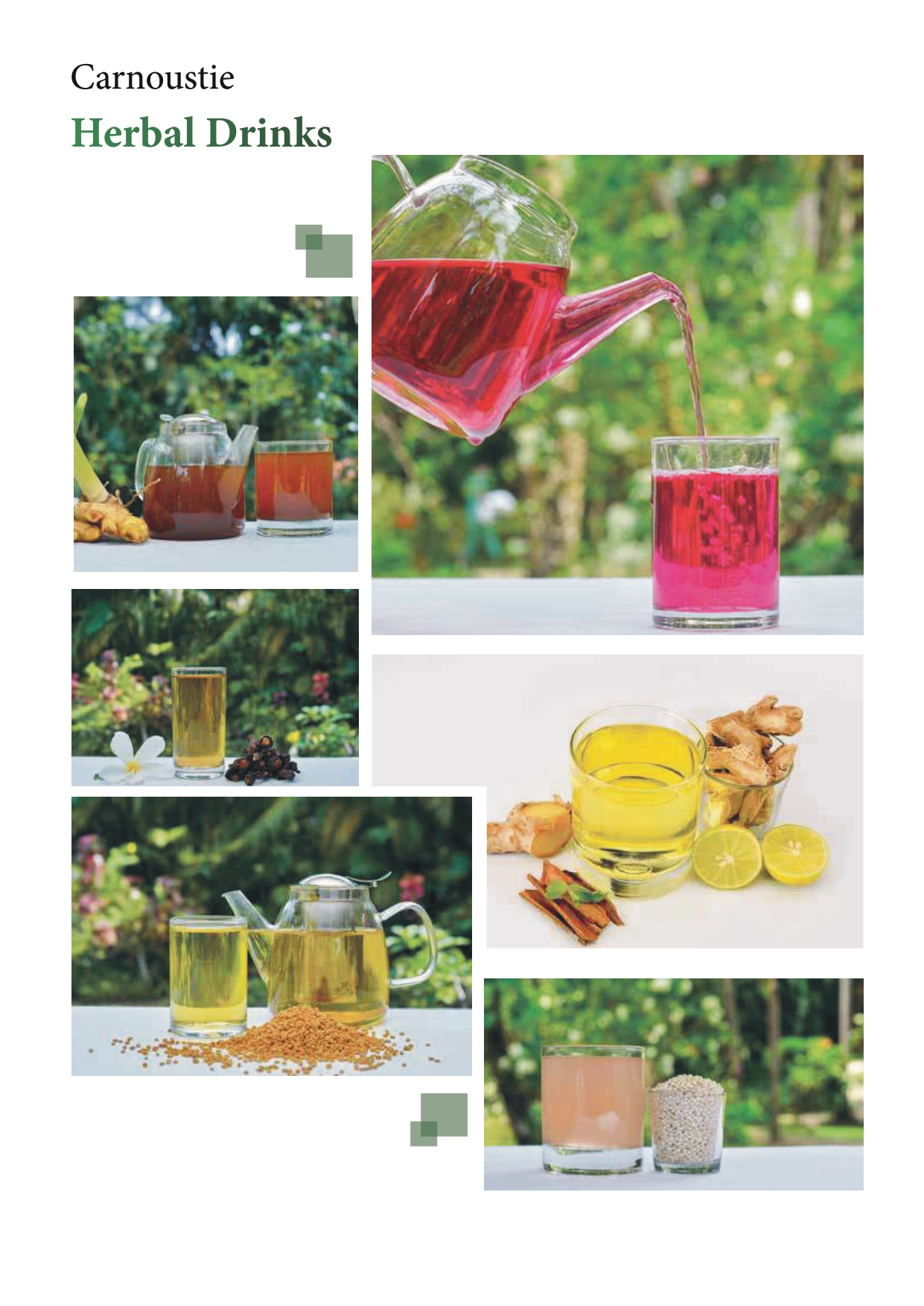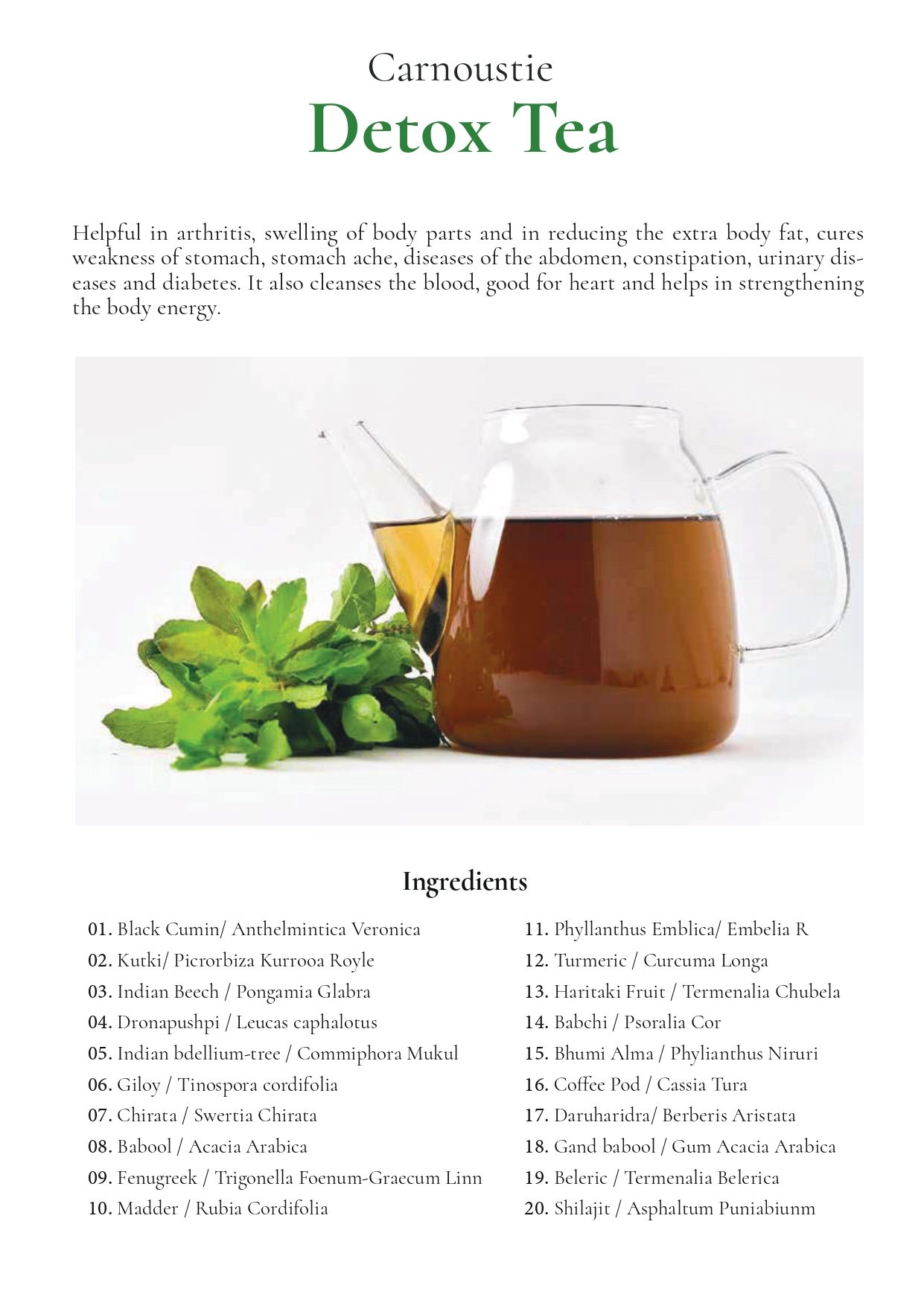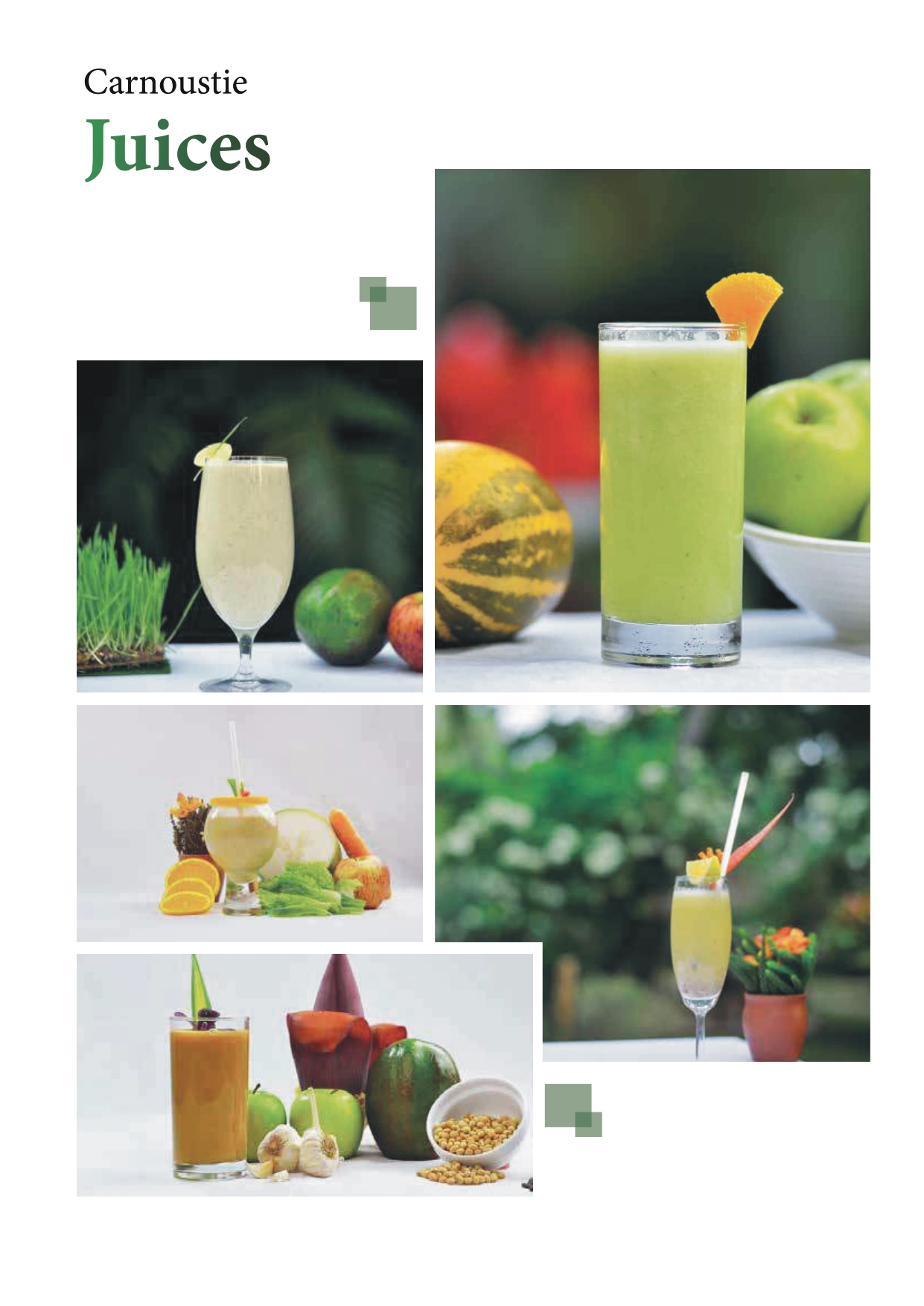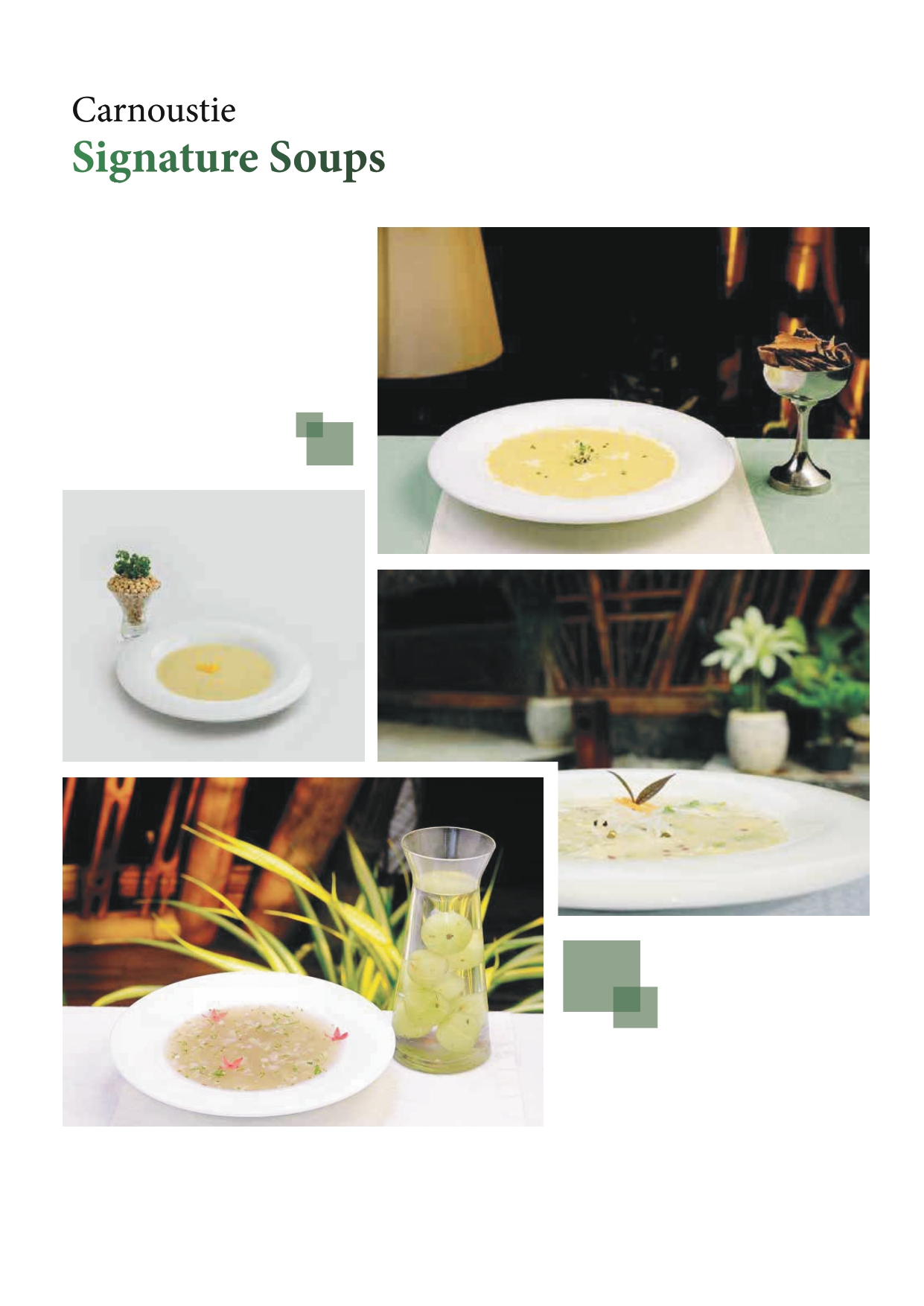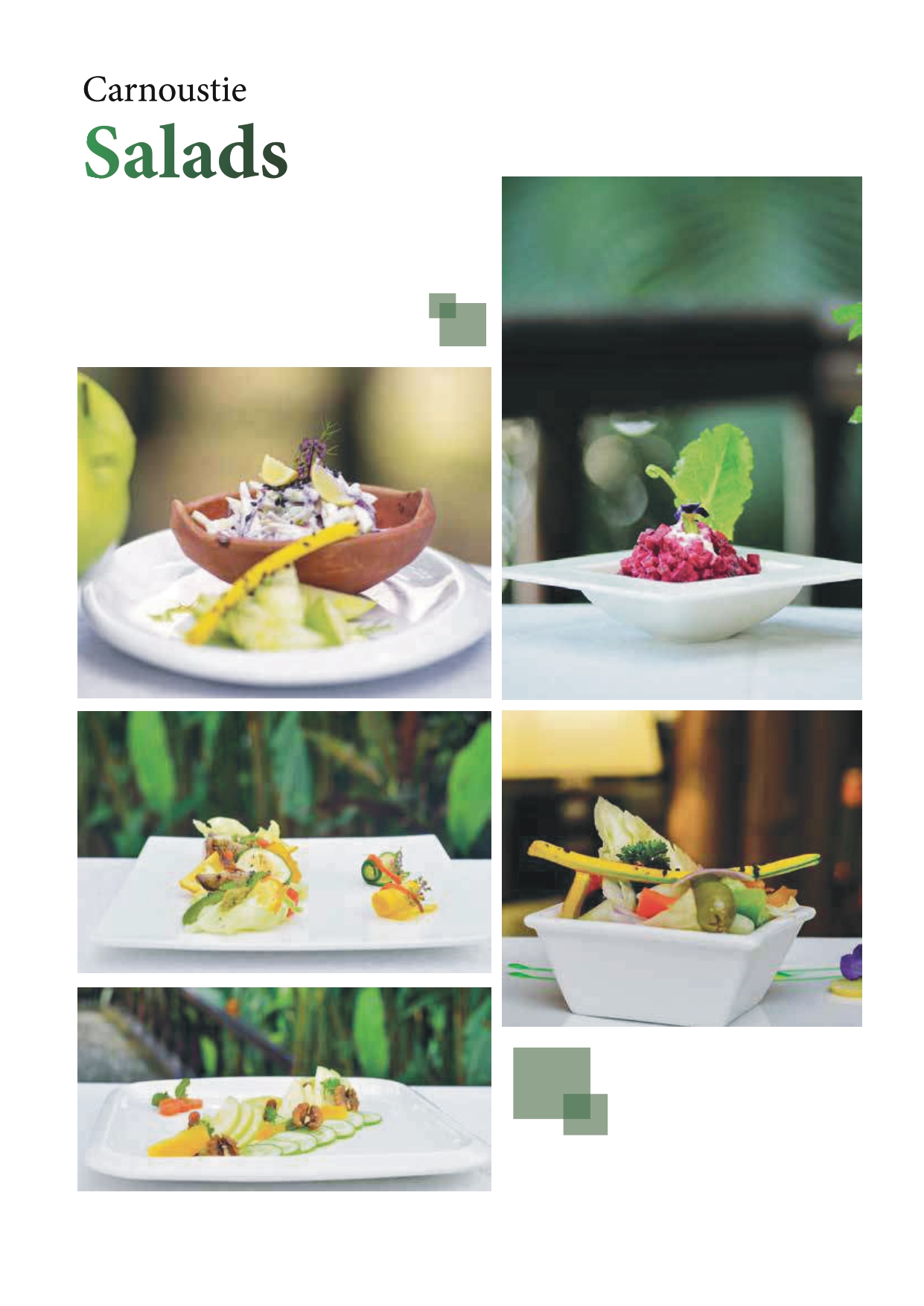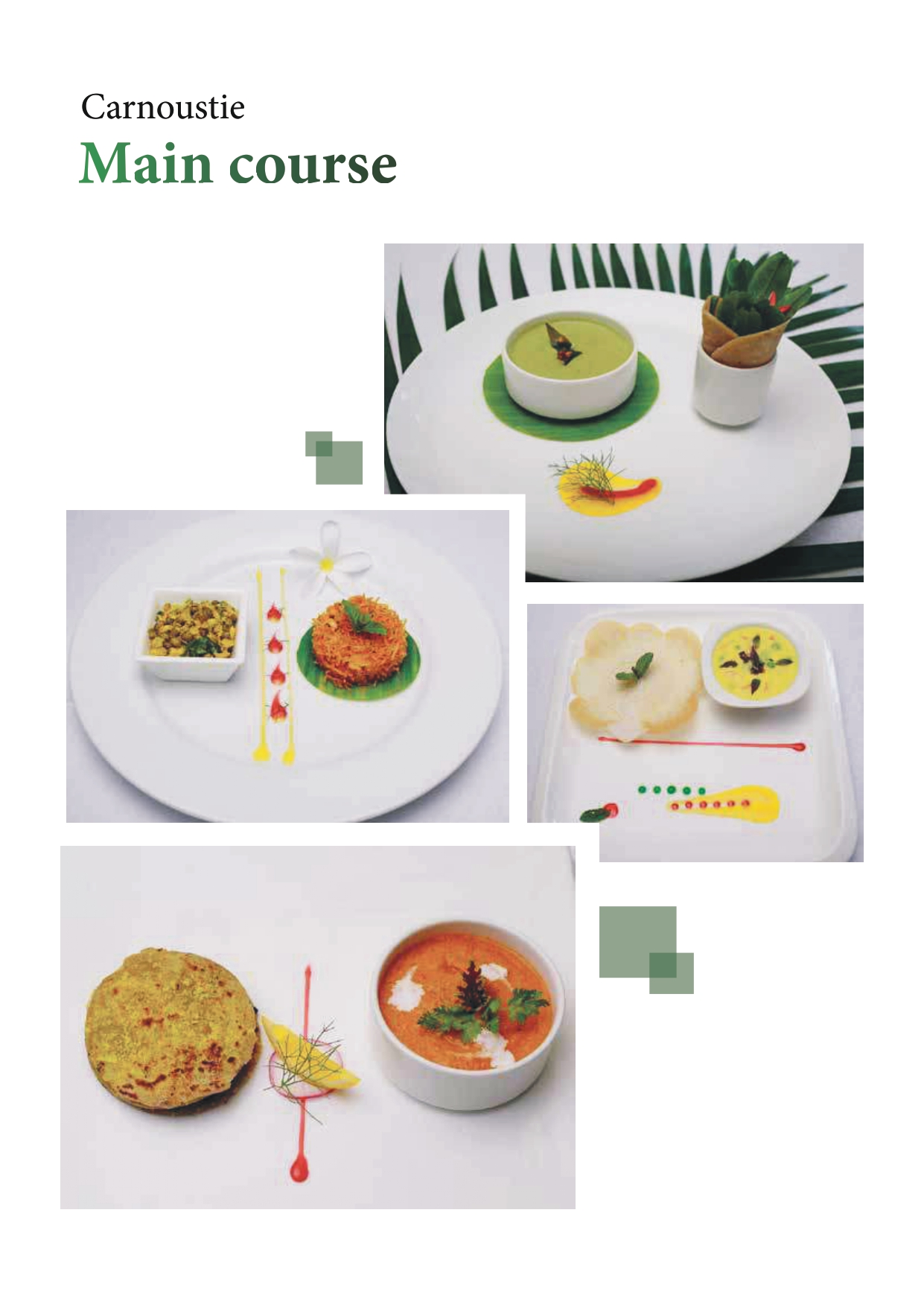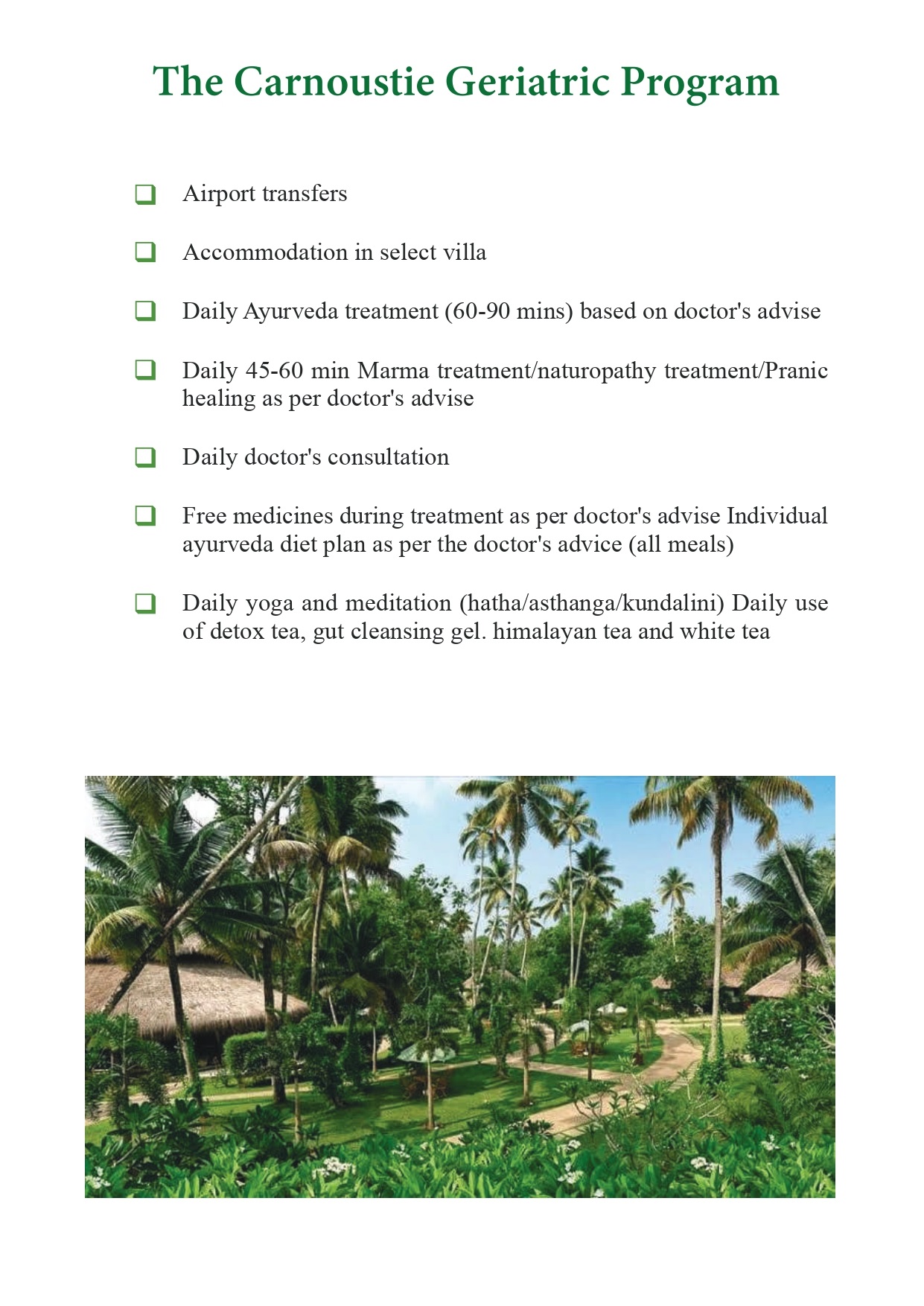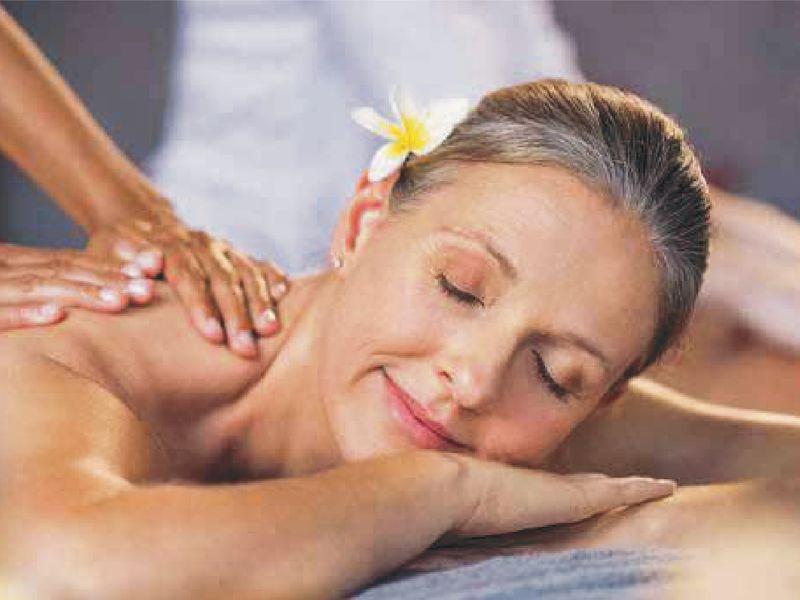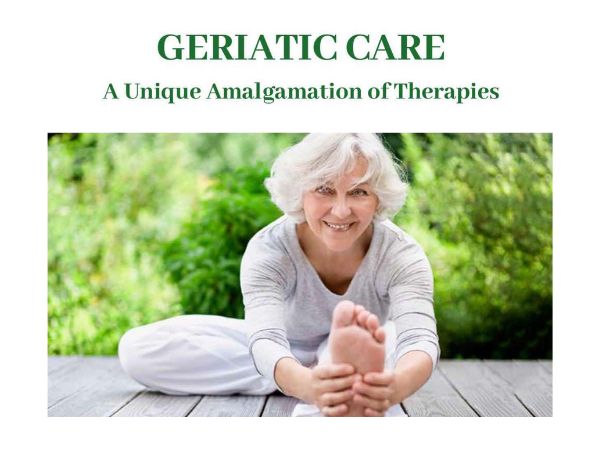
At Carnoustie Resorts, our focus is on what it takes to reach your individual maximum life expectancy and, most importantly, assuring it with optimal quality of life.
With advancing age, we experience a spectrum of changes in morphologi- cal and physiological characteristics that may be deteriorations directly related to the ageing process. How visible these age-related changes are in stamina, strength, or sensory perception, will vary based on your personal health choices, medical history, genetics and the environment you live in. The team of experts at Carnoustie have uniquely combined the timeless and time tested Ayurvedic practices of Panchkarma, with Marma, Pranic heal- ing, and Yoga to repair and revitalize body tissues and organs to address all ailment related to health conditions of the elderly.
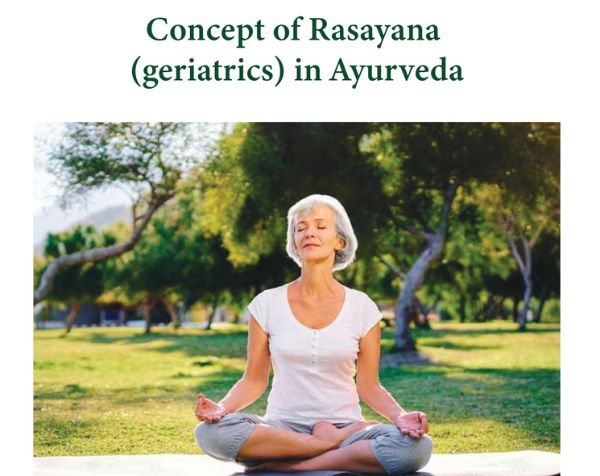
Psychological Complaints
Psychological Complaints (dementia, negligence in family, depres- sion), special problems of old age (medical and psychiatric), multiple difficulty, sensory impairments and side effects of drugs.Social and emotional issues
Nowadays the nuclear family system causes suffering for the elderly people i.e. absence of family members, physical abuse, psychological abuse, negligence and financial problems. These results in multiple problems to physical, social and mental well-being.Ayurveda recommends 2 methods of rasayana therapies depending on the tolerance level of the individual.
- Kutipraveshika Rasayana Therapy
- Vathathapika Rasayana Therapy
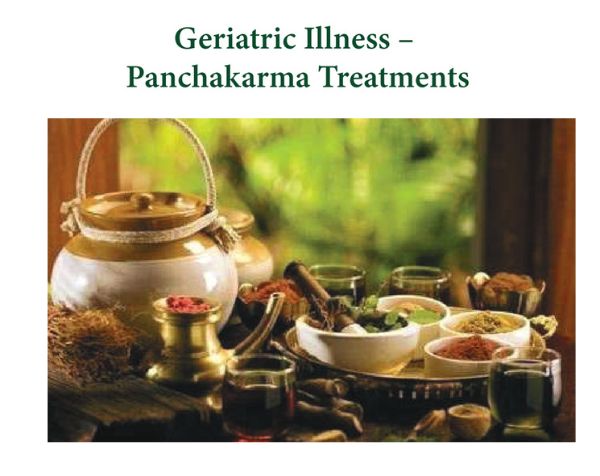
In old age panchakarma therapy aims at bio cleansing regimen in micro channels ie that will maintain body in haemostatis (dosha (life force), agni (digestive fire), dathu (tissues), malas (waste) in good levels. It is very effec- tive in old age for managing auto immune disorders, musculoskeletal disorders and other chronic diseases.
The treatments are snehana (internal and external oelation pizhichil (oil dripping on body), herbal kizhies swedanam herbal fomentation and steaming, are succeeded by samsargana karma (cleaning process), nasyam (nasal dripping), eye drip- ping (nethra dhara and tharpanam), oil bandages and oil packs. Vamana (emises, virecahnam (lactation and purgation), bhasthi (therapeutic decoction enema and oil enema.)
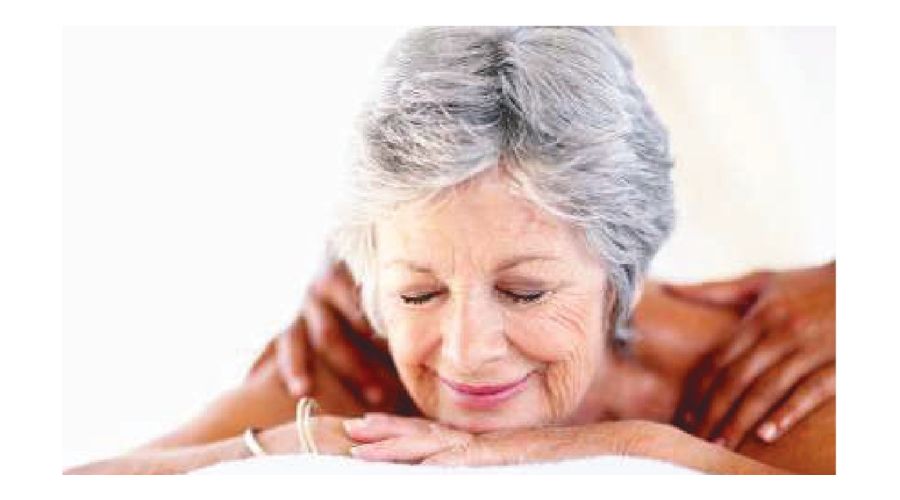
For the treatment of tension headaches and other neuro generative disorders, therapies like herbal oil decoctions, shirodhara, Shiro basthi, herbal pinda swedamas (kizhies) are effective. For cognitive difficulties, herbal oil massages, kizhi and shirodhara is done. For ear and eye sensory problems, herbal oil massages, kizhi and shirodhara for the body is done and neth- ratharpanam, nethradhara for the eyes, karnapuranam (oil dripping on ears), nasyam (oil dripping on nose). For dental complaints, moordhara thailam (oil dropping on the head), herbal paste rubbing on gums (denthada vanam, kabalam gandusham, herbal oil or decoc- tions filling in mouth and gargling. For skin and health care, abhyanga, kizhi, oil dripping on body (pizhichil kayasekha). For rheumatic complaints (vatha disorders) rheumatoid arthritis, rheumatic arte ritis and musculoskeletal disorders, abhyanga, oil shirodharas, oil kizhies, oil dripping and basthi - snehavasthi and decoction vasthi is effective.
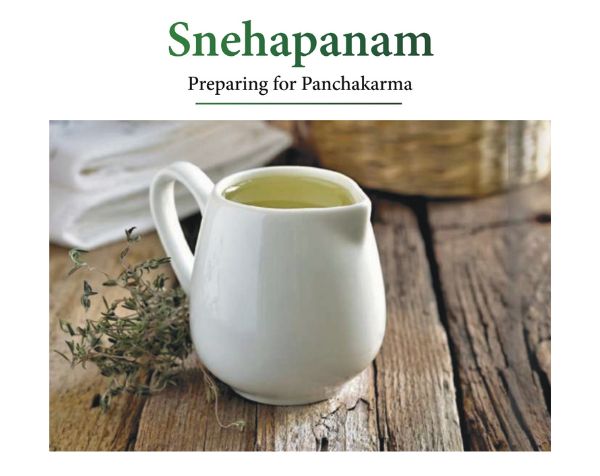
The Snehapanam (internal oleation) is a preparatory procedure for Panchkarma therapies. The effectiveness of the Panchkarma or the purification therapies depends upon the proper mobilization of humors (Doshas) from the periphery (Sakha) which is to be achieved through this treatment. The therapy involves oral intake of medicated or non-medicated or oil. Our experts use clarified butter (obtained from cow's milk) mixed with medicinal herbs. Snehapanam is done in the morning after attending to the call of nature, on an empty stomach. The dosage depends on the health, age, diagnosed illness and digestive capacity of the patient. The treatment lasts between five and seven days depending on the condition of the patient and the illness being treated.
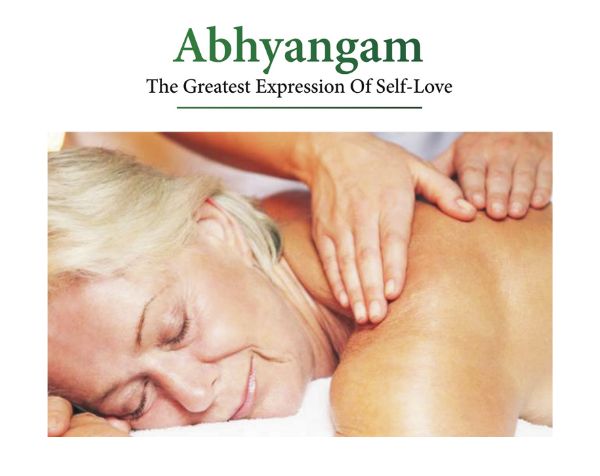
The Greatest Expression Of Self-Love It is believed that the effects of Abhyangam are similar to those received when one is saturated with love. Abhyanga is infusing the body with prana' or vital life force. When we infuse all our cells with love, they are revitalised and energised. It involves massaging of the body with warm oil infused with healing herbs and balancing essential oils. Abhyangam moves Prana (vital life force energy) within the body thereby nourishing and revitalizing all body organs. It aids the removal of toxins and stimulates both arterial and lymphatic circulation. It boosts the ability of nutrients to reach starved cells and allows for the removal of stagnant waste.
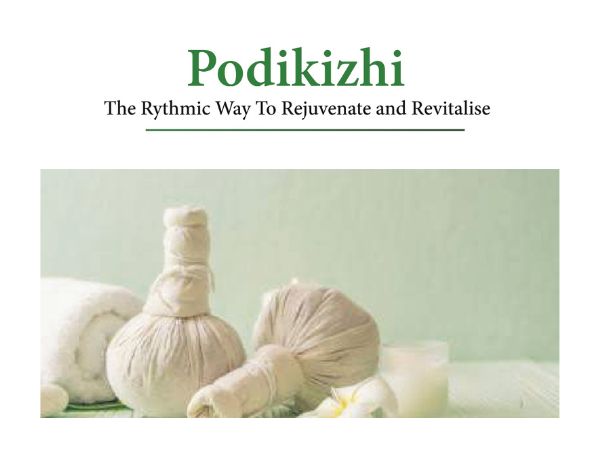
Podikizhi is an Ayurveda technique of fomentation in which the whole body or certain parts of the body are fomented and made to sweat, the application of medicinal powders. A warm prescribed mixture of herbs tied in muslin pouches is gently pounded and pressed into the skin by the therapists in a rhythmic motion. The pounding is accompanied by a synchronised massage with herbal oils. Podikizhi is very effective in treating Kapha-Vata predominant conditions of arthritis, back pain, paralysis, and muscular pains. This treatment is useful for relieving deep seated tension, increasing blood circulation, loosening built up toxins, strengthening muscle tissue and ridding the body of excess Kapha. This treatment increases blood supply to the skin and improves skin lustre and and eliminates through skin
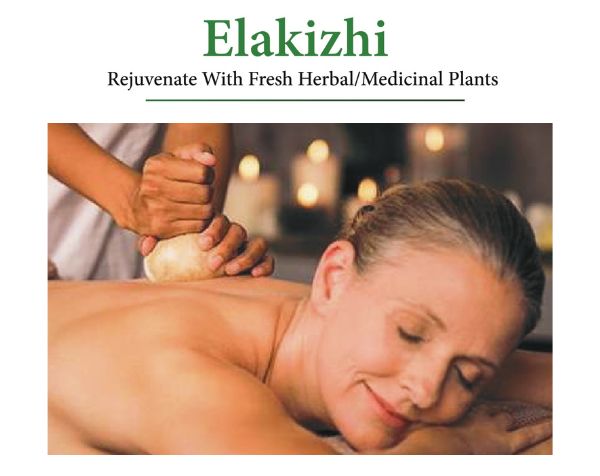
Elakizhi or Patrapotala Sweda is a rejuvenating sudation practice in Ayurveda treatments using fresh leaves of herbal/medicinal plants. Anti Vata plants, such as Eranda (Ricinus communis), Arka (Calotropis Procera), Nirgundi (Vitex negundo), Rasna (Pluchea lanceolata), coconut leaves, lemon and curcumin are fried with herbal ingredients and tied into cloth boluses. These are dipped into warm medicated oil and used for massaging the body. The massage with heated boluses induces profuse sudation, which helps in the fomentation process Elakizhi is effective for various kinds of arthritis, spondylitis, back pain, sports injuries and for all other soft tissue inflammations especially joint pains. The massage promotes better blood circulation within the affected area and induces perspiration which helps the skin to eliminate wastes.
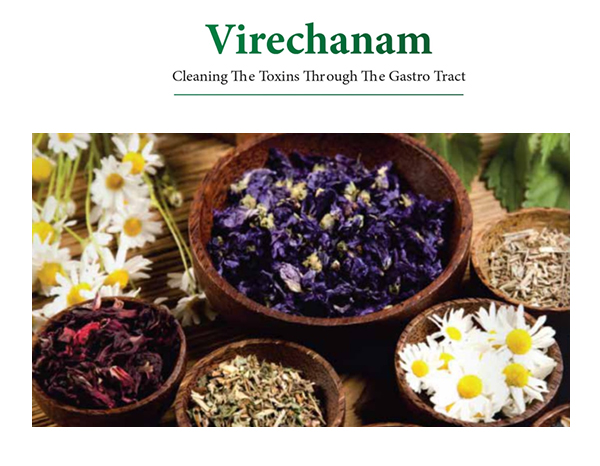
Virechanam cleanses the Pitta and purifies blood by clearing the toxins from the body. The treatment concentrates on the toxins that are accumulated in the liver and gall bladder and the gastro-intestinal tract. In Virechanam, the vitiated Doshas are eliminated through the rectum. The treatment is given in the morning after the person is given the "Snehapanam" and "Swedanam for internal lubrication. The person is then given a certain prescribed dose of herbal medicines on an empty stomach Within 1 to 2 hours, the bowels are emptied expelling all accumulated toxins with it, Virechanam is an excellent rejuvenating detox treatment. Virechanam is used to treat gastrointestinal disorders, skin ailments, gout, splenic disorders, ulcers, IBS, gastritis, intestinal colic, headaches, asthma, indigestion, gynecological disorders, hypertension and erectile related ailments.
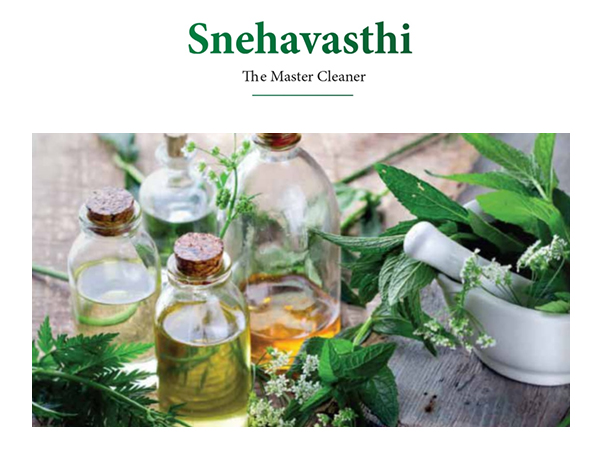
Snehavasti is one among the five classical detoxification programmes (Panchakarma) and specially recommended for Vata disorders. Medicated oils or ghritams are used to administer an oil enema, which nourishes and lubricates the body. The main seat of Vata dosha is the Pakwashaya (large intestine); therefore Vasti, the medicated oil enema, is the main therapy for all Vata disorders such as constipation, neurological ailments, paralysis, flatulence, lower backache, gout, and rheumatism. Sneha Vasti results in nourished and rebuilt Dhatus (body tissues), it strengthens their activities, restores and strengthens the body's immunity. It is particularly helpful in curing gastric and neurological disorders, acidity, acute and chronic aches, headache and other degenerative disorders.
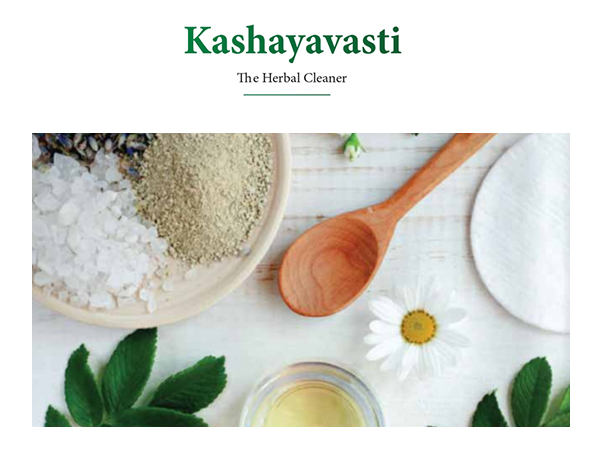
In Kashayavasti, a herbal decoction made of honey, rock salt, medicated oil and herbs is administered through the anal route. A massage with warm herbal oils is given before the treatment. The treatment is administered as per prescribed dosage under supervision. The body dispels all toxins with the faecal matter. This treatment is particularly helpful in curing gastric and neurological disorders, acidity, acute and chronic aches, headaches, migraines and other degenerative disorders. It is a very effective detox and weight loss procedure.
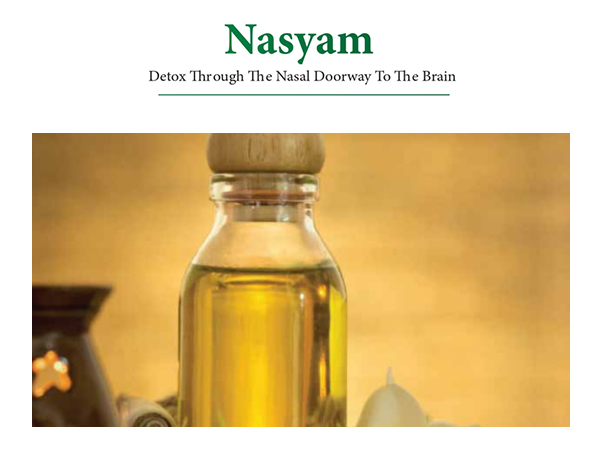
Nasyam is a very important treatment for any discomfort in the head region. Nostrils are considered the doorway to the brain. In this therapeutic treatment medicated oil, medicated powder or herbal juices are administered through the nose for a prescribed duration. This removes the excess humors accumulated in the different sinus cavities and throat and is very effective for treating migraine, hormonal imbalances, paralysis, mental disorders, premature graying of hair, loss of smell and taste. It cleanses the different cavities, increases oxygenation and improves brain functioning. There are different kinds of Nasyams based on the difference in the type of medicines and oils used. Nasyam not only helps in removing toxins from the head, neck, brain, eyes, car, nose and throat region, it also gives immunity and strengthens their functioning.
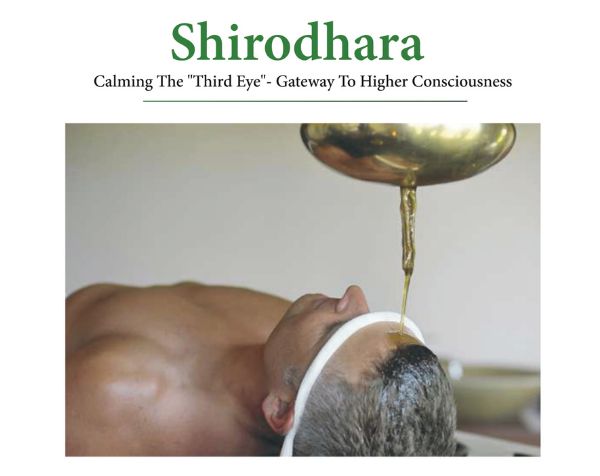
The term 'Shirodhara' is derived from the two Sanskrit words: 'shiro, meaning head, and 'dhara, meaning to flow. It involves the warm and steady flow of medicated oils on the forehead, more specifically on the "third eye. The Vedas describe the third eye chakra or 'Ajna as the gateway to higher consciousness and enlightenment having deep spiritual and psychosomatic significance. The calming medicated oils flow in a continuous stream transporting the self to a calmer place thawing all negative emotions and clearing fear, anxiety, anger, or irritability. It is said to have a balancing effect on the deepest recesses of the brain, while stimulating the endocrine system's pituitary and pineal glands. The treatment enhances blood circulation to the brain, increases mental clarity and releases deeply trapped toxins.
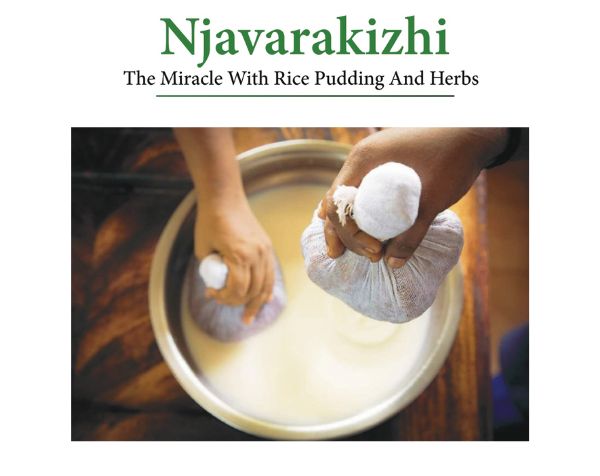
Njavara in Malayalam stands for the rice that grows in 60 days; Kizhi (Pinda in Sanskrit) stands for bolus. 'Njavara' is an indigenous variety of rice grown in Kerala. having medicinal properties. A generous amount of medicated oil is applied over the head and body. Then the body is massaged with a warm muslin bag bolus containing njavara rice puddings cooked in a herbal decoction. At the end of the procedure, the rice paste sticking over the body is removed using coconut leaves and the treatinent is wrapped up with a gentle massage with herbal oil. This treatment rejuvenates and revitalises all internal organs, makes the body more supple, slows the ageing process, improves Instre and texture of the skin, calms the mind and reduces stress, promotes sound sleep, develops the muscular system, cures rheumatic troubles, boosts the immune system, pacifies Vata Dosha and strengthens and nourishes the nervous system.
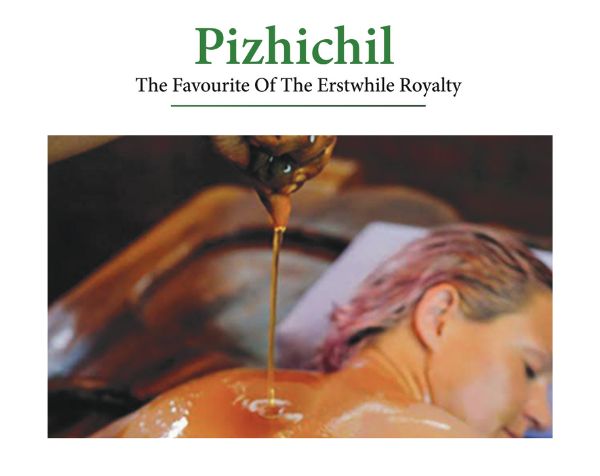
Pizhichil is one the most popular Ayurvedic therapeutic treatments favored by the royal families and aristocrats of yore. The whole body is bathed in streams of lukewarm medicated oil and the patient is massaged simultaneously by two to four therapists, continuously in a special rhythmic way. The procedure is followed by a medicated steam bath. This is a highly rejuvenating treatment that enhances muscular tone and energizes the entire nervous system. It helps to eliminate toxins from the body, improves blood circulation and revitalizes all organs. It is very useful for rheumatic diseases, arthritis, paralysis, sexual weakness, neurological disorders. blood pressure, nervous weakness and helps to arrest the ageing process
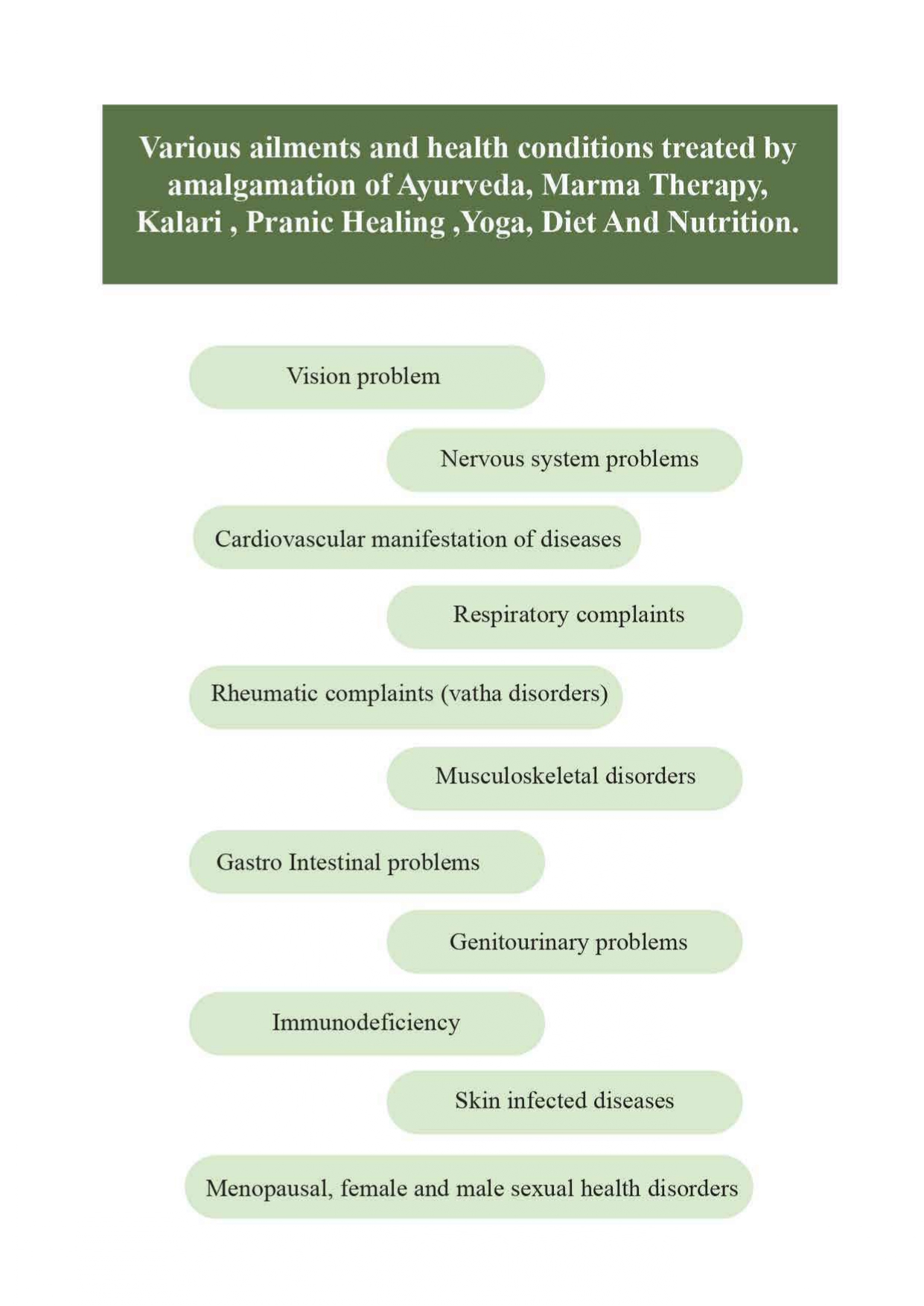
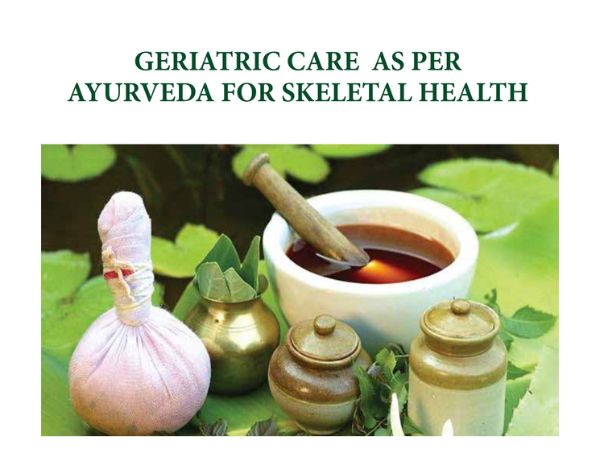
Ayurveda, the Indian traditional holistic health science has broad spectrum of preventive measures for combating the ageing process. It has a focused branch called Rasayana which deals primarily with geriatric problems. Prevention and management of health problems could help the elderly to improve quality of life and remain self- dependent for their daily activities to maximum possible extent. Hence what all is needed is to retard the rate of aging to a limited extent and to promote healthy aging. There is considerable scope to develop a safe and cost-effective protocol for geriatric care on the basis of Ayurvedic lifestyle management, Rasayana therapy and practice of yoga. Bones undergo a lifelong process of remodeling - mature bone tissue is removed and new bone tissue is formed. Bone remodeling is a highly regulated process that maintains a a balance between bone resorption and formation, thus maintaining skeletal integrity. This balance changes with increasing age, resulting in loss of bone tissue. The ageing bone has reduced mineral content, and is prone to osteoporosis - a condition in which bones are less dense, more fragile, and prone to fractures.
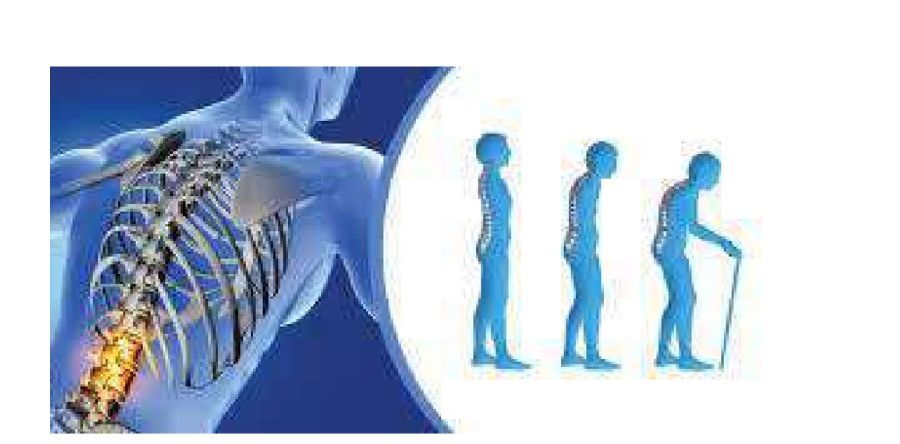
Osteoarthritis and Osteoporosis
Degenerative changes of joints and bones are most common in elderly. It leads to various clinical ailments like osteoarthritis of various joints, cervical and lumbar spondylosis and osteoporosis. Osteoarthritis is the single most important cause of locomotor disability in elderly. It is a degenerative disease of synovial joints characterized by localized loss of cartilage, subchondral bone thickening (sclerosis), osteophyte formation and synovial thickening.
- Orothoporosis is a common problem among older people, especially post- menopausal women, and is a major cause of hip fractures in the elderly.
- Reduced bone density of the vertebrae, combined with the loss of fluid in intervertebral discs, result in a curved and shortened trunk.
- This reduced bone density, and resulting poor posture, leads to pain, reduced mobility, and other musculoskeletal problems.
- The risk of injury increases because gait changes, instability, and loss of balance may lead to falls.
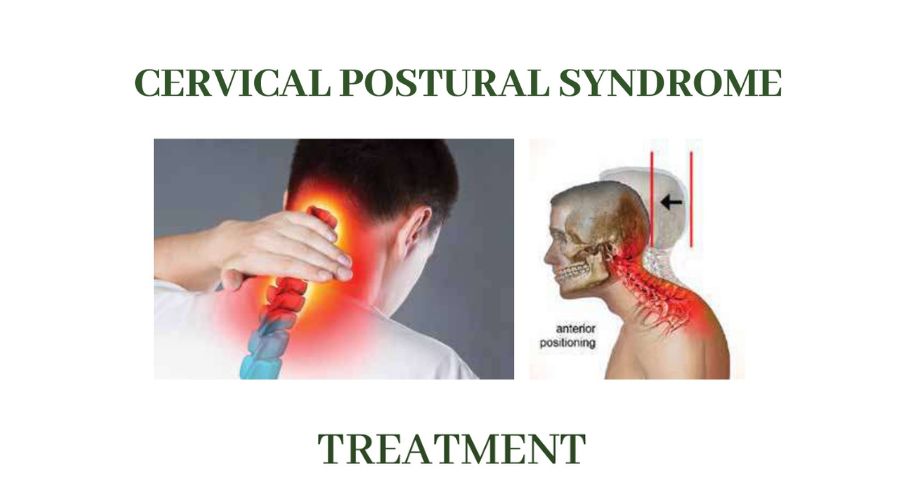
Cervical Postural Syndrome is characterised by poor posture of the shoulders, middle back and neck which causes back pain and tight muscles.
INTERNAL
- Nayopayam kashayam
- Kalyanakam kashayam
- Manasamitra vadakam
- Dhanwantharam gulika
- Gorochanadi Gulika
- Snehapanam with Kethakimooladi Thailam
EXTERNAL
- Thalam with Maha bala thaila and kachooradi choornam
- Nasyam with ksheerabala Thailam (101 avarthy) / Maharajaprasarani Thailam
- Sirodhara with Balaswagandhadi thailam
- Karnapuranam with Ksahara Thailam / Ksheerabala Thailam
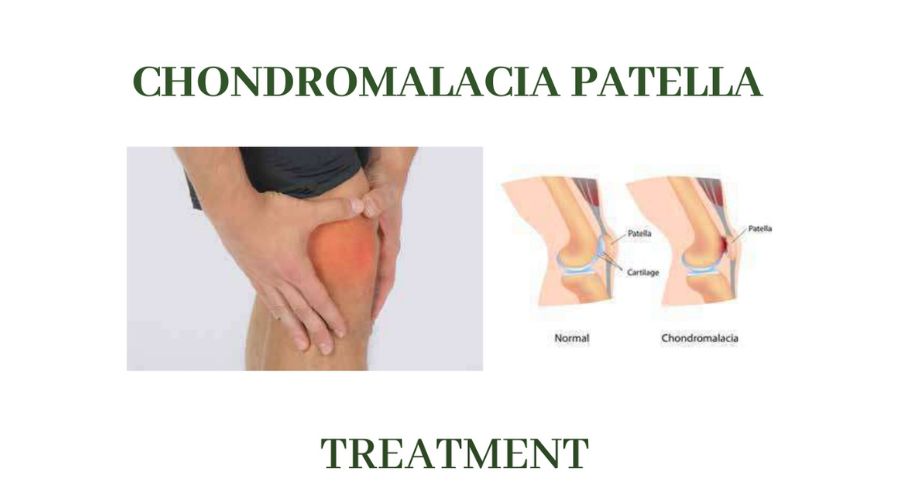
Chondromalacia patellae, also known as "runner's knee," is a condition where the cartilage on the undersurface of the patella (kneecap) deteriorates and softens.
INTERNAL
- Amrithotharam kashayam + Pachanamritham kashayam
- Snehapanam with Mahathikthakam Gritham
- Cap Gandha Thailam
- Tab. Laksha Gulgulu
- Kozhi Lehyam (Ref. Mamsa sastra peedika)
EXTERNAL
- Lepam with Jadamayadi Choornam and Dhanyamlam
- Dhara with Uravu bark / Laksh milk kashayam
- Thaila Dhara with Pindathailam
- Bandage with Gandha Thailam and Dhanwantharam thailam (Avarthy)
- Shashtikapindasvedam with Varal Fish
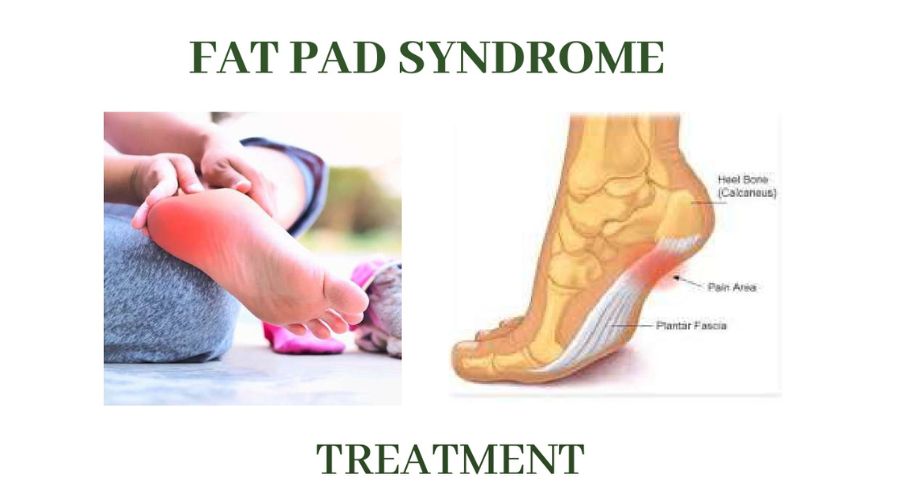
(Corpus Adiposum also Called Hoffittis) Heel pad syndrome is a pain that occurs in the center of the heel. It is typi- cally due to atrophy of the fat pad which makes up the heel.
INTERNAL
- Shatdharanam Kashayam / Moolakadi Kashayam
- Nimbamrithasavam
- Nimbamritadi Eranda Thailam
EXTERNAL
- Lepam with sanninayakam, Muringa skin juice and eggwhite
- Pathrapodala Swedam with karaskara leaf, Sanninayakam etc.
- Agnikarma Sringam (Cupping)
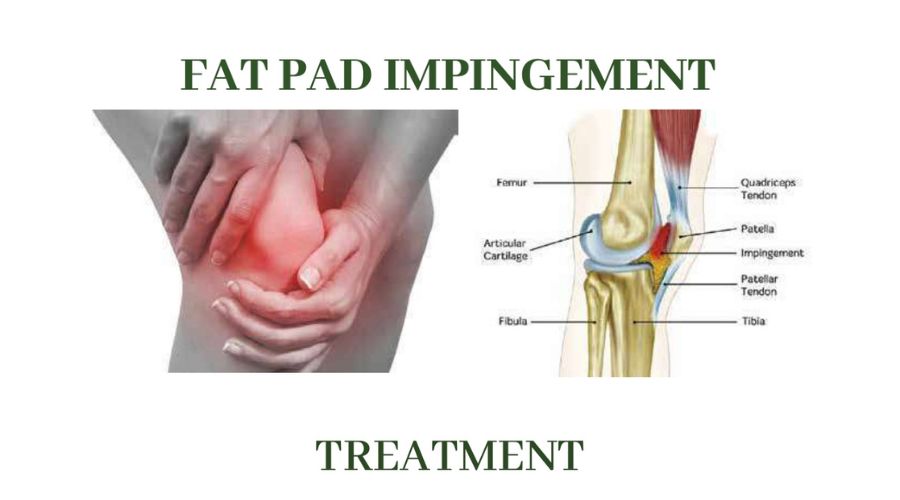
The infrapatellar fat pad is also sometimes known as Hoffa's pad. It is a soft tissue that lies beneath the kneecap which can get impinged, causing knee pain.
INTERNAL
- Dhanwantharam kashayam
- Tab.Amritha guggulu
- Snehapanam with Gulguluthikthaka Ghritha and Thamra Bhasma
EXTERNAL
- Lepam with Unmathadi Kuzhampu (Ref. Marmasastra peedika)
- Immobilisation and bandage with special Murivenna
- Ksheera dhara with milk kashayam of seethadravyas
- Dhara with Bhoonaga thailam
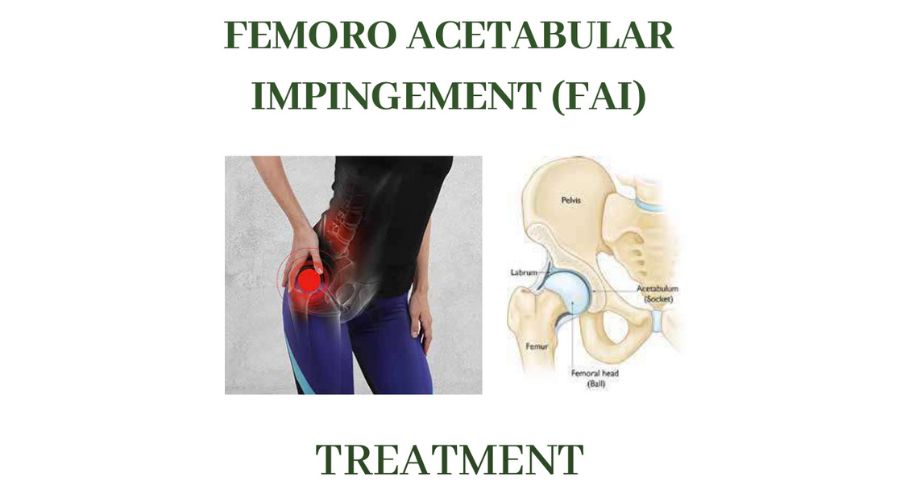
Femoroacetabular impingement or FAI is a condition where the bones of your hip joint come too close and pinch tissue or cause too much friction.
INTERNAL
- Rasnasuntyadi Kashayam
- Laksha Gulgulu
- Milk Kashayam with Laksha
- Snehapanam with Gulguluthikthaka Ghritham
EXTERNAL
- Dhara with Dhanyamlam
- Dhara with Kanjira Bark Milk Kashayam
- Thailadhara with Pindathailam
- Kalavasthy
- Mathravasthy with Gandha Thailam etc.
- Ksheera Vasthy with Dasamoola Panchathikthakam Milk Kashayam with other Ksheeravasthy medicines
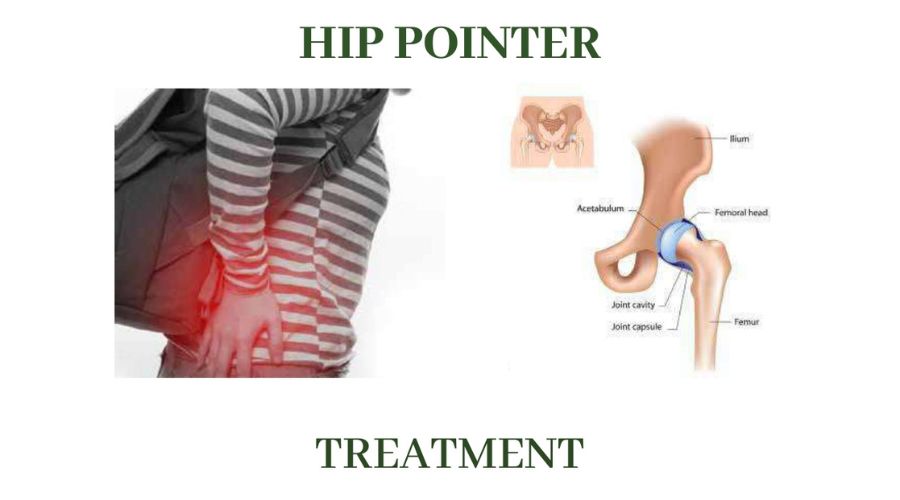
A hip pointer is a contusion on the pelvis caused by a direct blow or a bad fall at an iliac crest and / or hip bone and a bruise of the abdominal muscles (transverse and oblique abdominal muscles). Surrounding structures such as the tensor fasciae latae and the greater trochanter may also be affected.
INTERNAL
- Punarnnavadi kashayam
- Tab. Gokshuradi guggulu
- Tab.Laksha guggulu
- Snehapanam with Laksha asthisrunghala ghritam
EXTERNAL
- Immobilization and Bandage with murivenna
- Sheetha dhara with sheetha dravya milk kashayam
- Matravasthi with murivenna/Gandha thailam
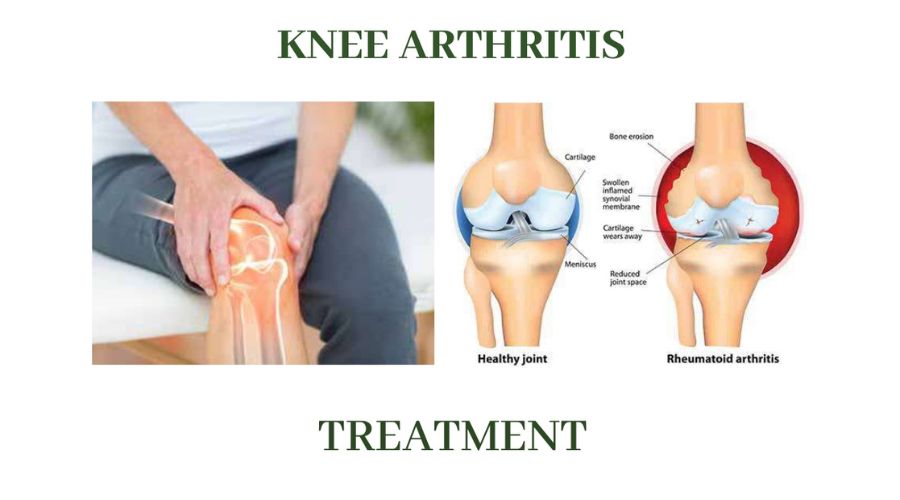
The most common type is osteoarthritis (OA), a progressive condition that slowly wears away joint cartilage. OA is most likely to occur after middle age. Rheumatoid arthritis (RA) is an inflammatory condition that can strike at any age. Post-traumatic arthritis develops following an injury to the knee.
INTERNAL
- Pachanamrutham Kashayam
- Nimbamrithadi Ernda Tailam
- Kaishora Gulgulu Gulika
- Rasnairandadi Kashayam
- Snehapanam with Gulguluthikthakam Ghritam Rheumatoid arthritis
EXTERNAL
- Dhara with Karaskara bark Kashayam
- Upanahaswedam
- Taila dara with pindatailam
- Shastika Pinda Swedam
- Jalookavacharanam
- Yogavasthi
- Kshara vasthy
- Yapana Vasty
- Mathra Vasty with Brihat saindavadi Thailam etc.
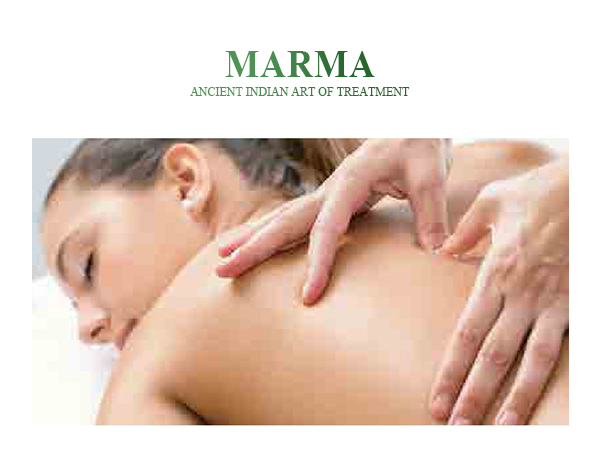
- There are 107 reflex points around the body where flesh, veins, arteries, of these points have their own intelligence and consciousness, which tendons, bones and joints meet up. Each co-ordinate with the mind and body and this helps to re-educate the brain in control and co-ordination of muscles and nerves after illness or injury.
- The therapy involves stimulation using the fingers of these Marma (trigger) points, which promotes physical and mental rehabilitation.
- The Marma Therapeutic treatments isolates points and cleans them out by increasing blood flow to the affected part of the neuro-muscular junction. Stretching of muscles and tendons is also used to improve tone, and gentle manipulation of the spine.
- Marma Therapeutic Massage has wide applications. Particularly for stroke victims as the massage clears away obstructions which delay information being communicated.
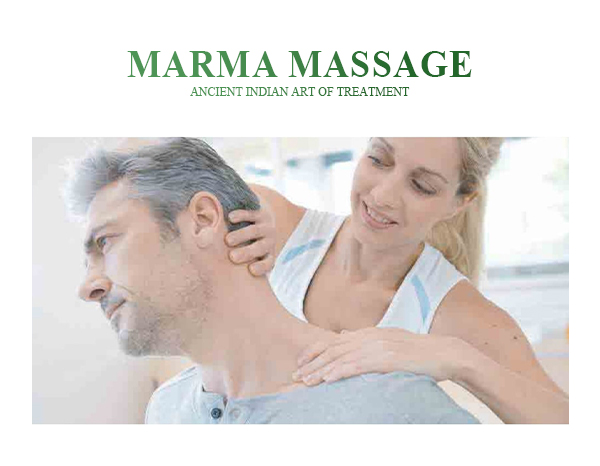
Liman massage (Thokkanam) is one of the way of touch therapy. It is the Marma and physical manipulation of the body usually done with or with out oil application. This can be used for the manupilation of Acute, Chronic, Intrinsic, Extrinsic types of sports injuries. It is not only very effective for neurological and musculoskeletal problems but also for promoting mental and physical fitness. According to Ayurveda, disease in the body occur due imbalance of three humours that is Vatham, Pitham and kapham which in turn are governed by five fundamental elements - Akayam (Space). Vayu (Air). Theyu (Fire). Appu (Water) and Munn (Earth). This dosha principle is involved in the above mentioned four types of sports injuries. In Marma massage, the physi- cian uses his hands on the body of the patient in 9 different unique ways with or with- out using medicated oil with a curative or palliative point of view.
Whole body Marma massage can be performed by the following mentioned Marma points. This can be achieved manipulation in specific manner like Thattal (Fric- tion/percussive strokes). Irukkal (wringing), Pidithal (draining). Murukkal (knead- ing). Atunthat (gliding), Muthal extension of timbs, (pulling). Kaikottal, Mallathuth- al, Asaithal (flexion and spine).
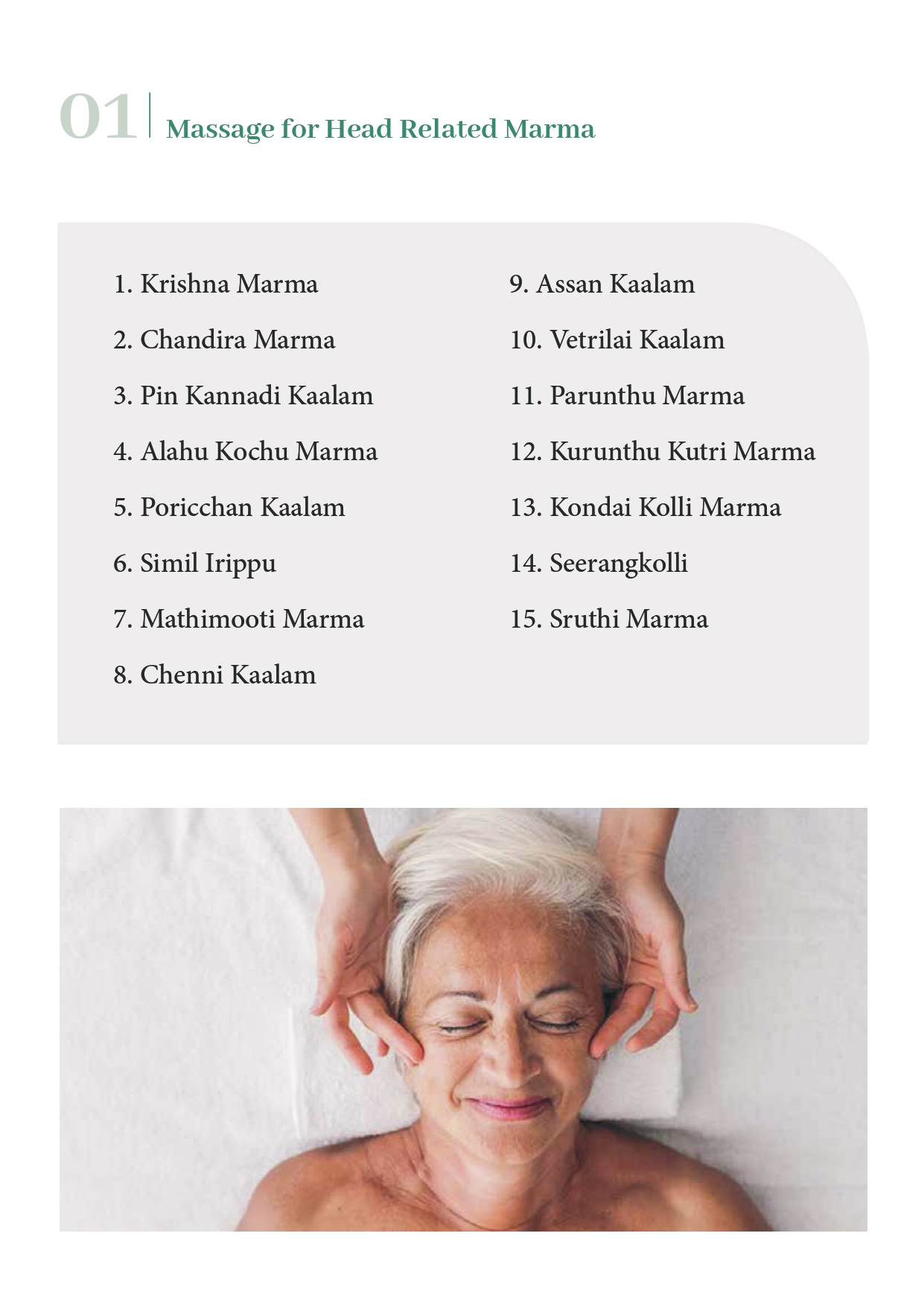
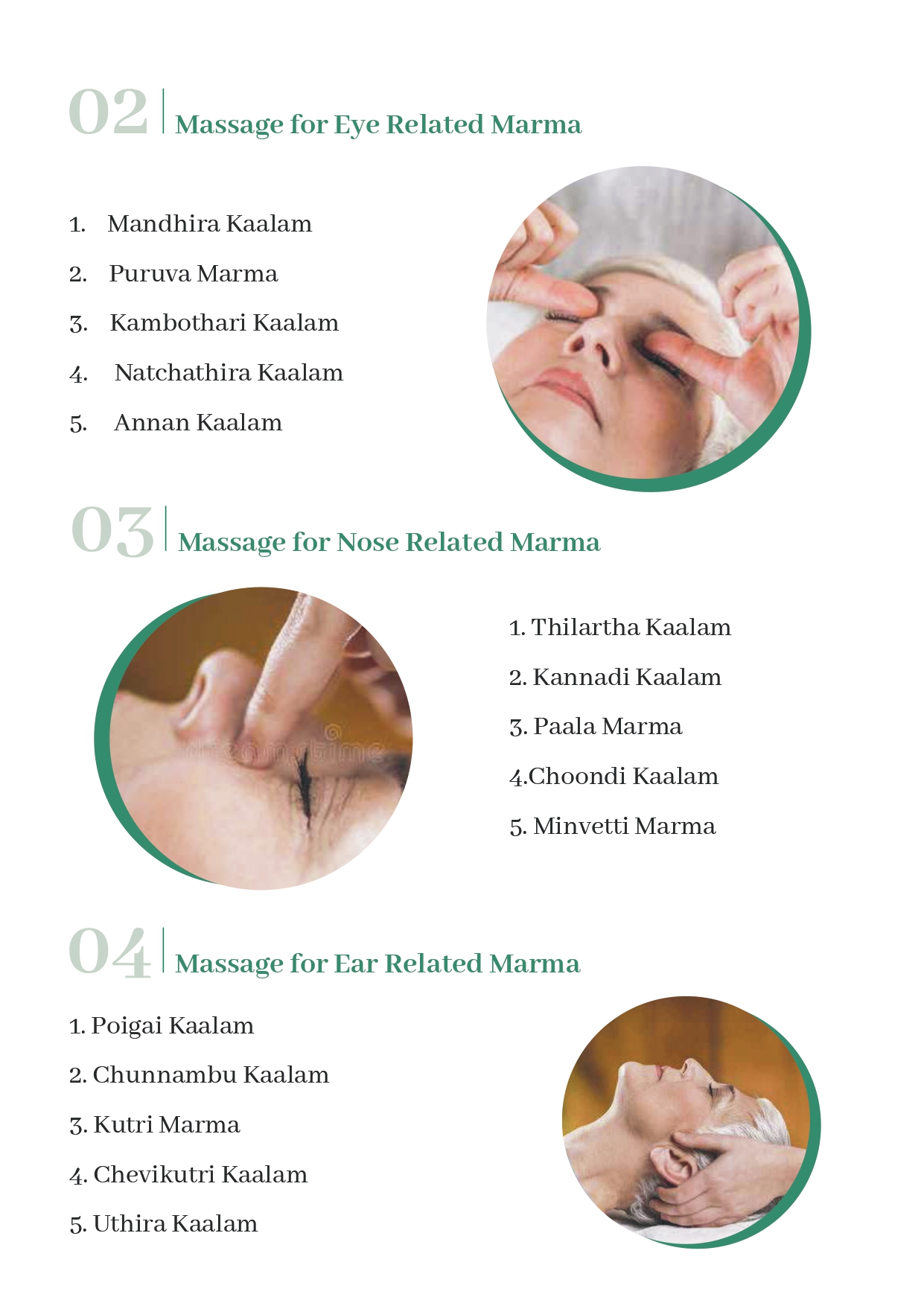
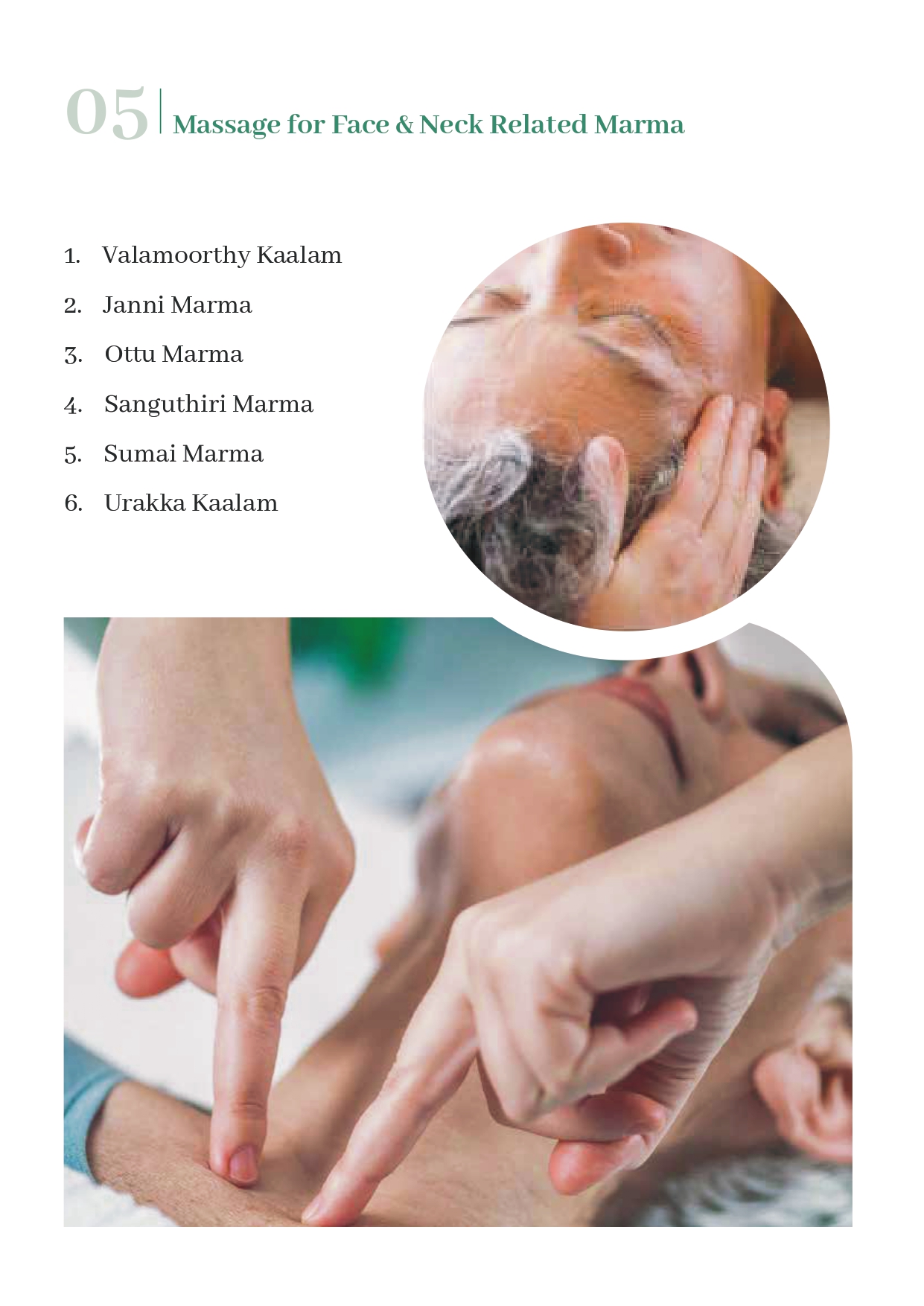
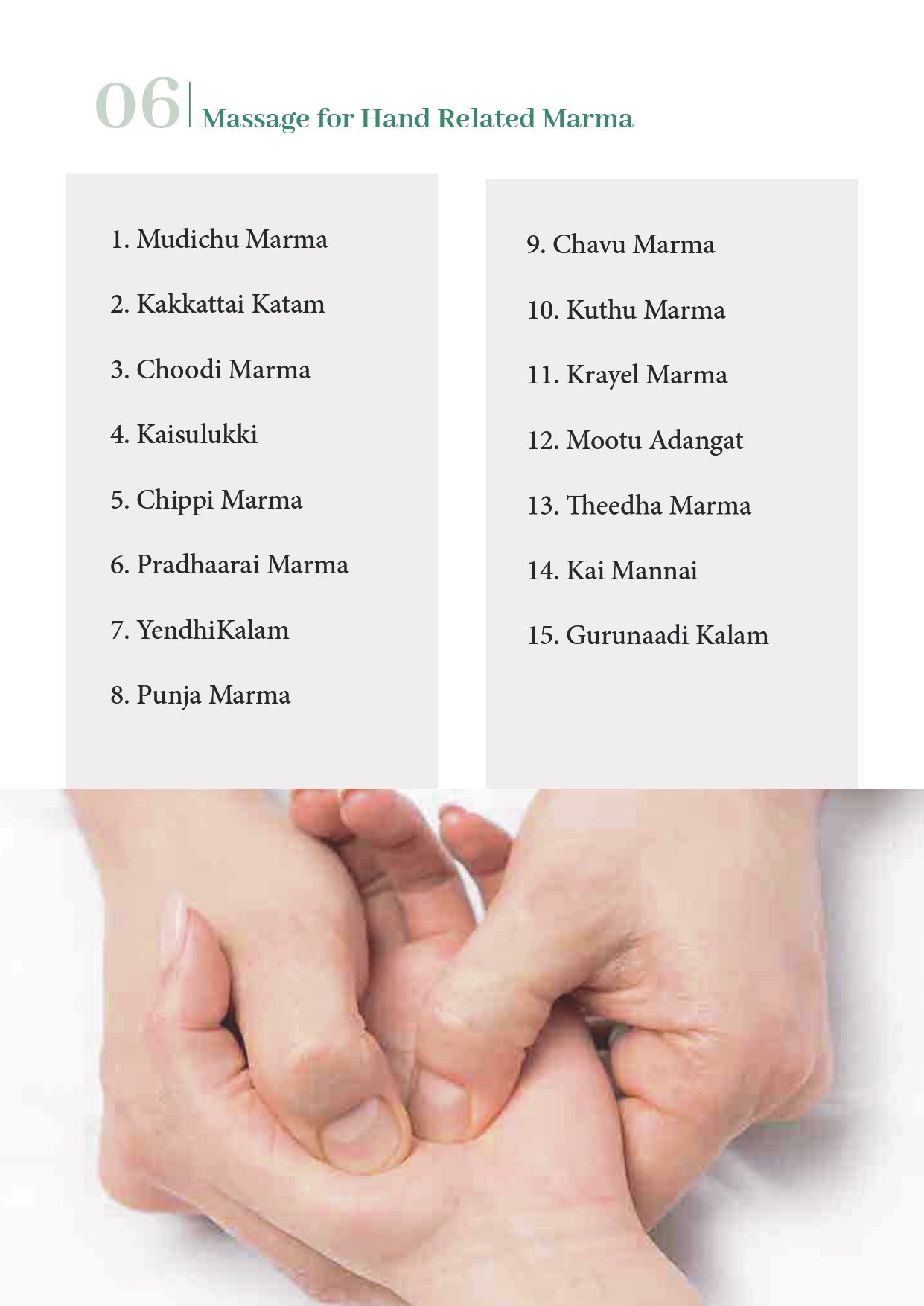
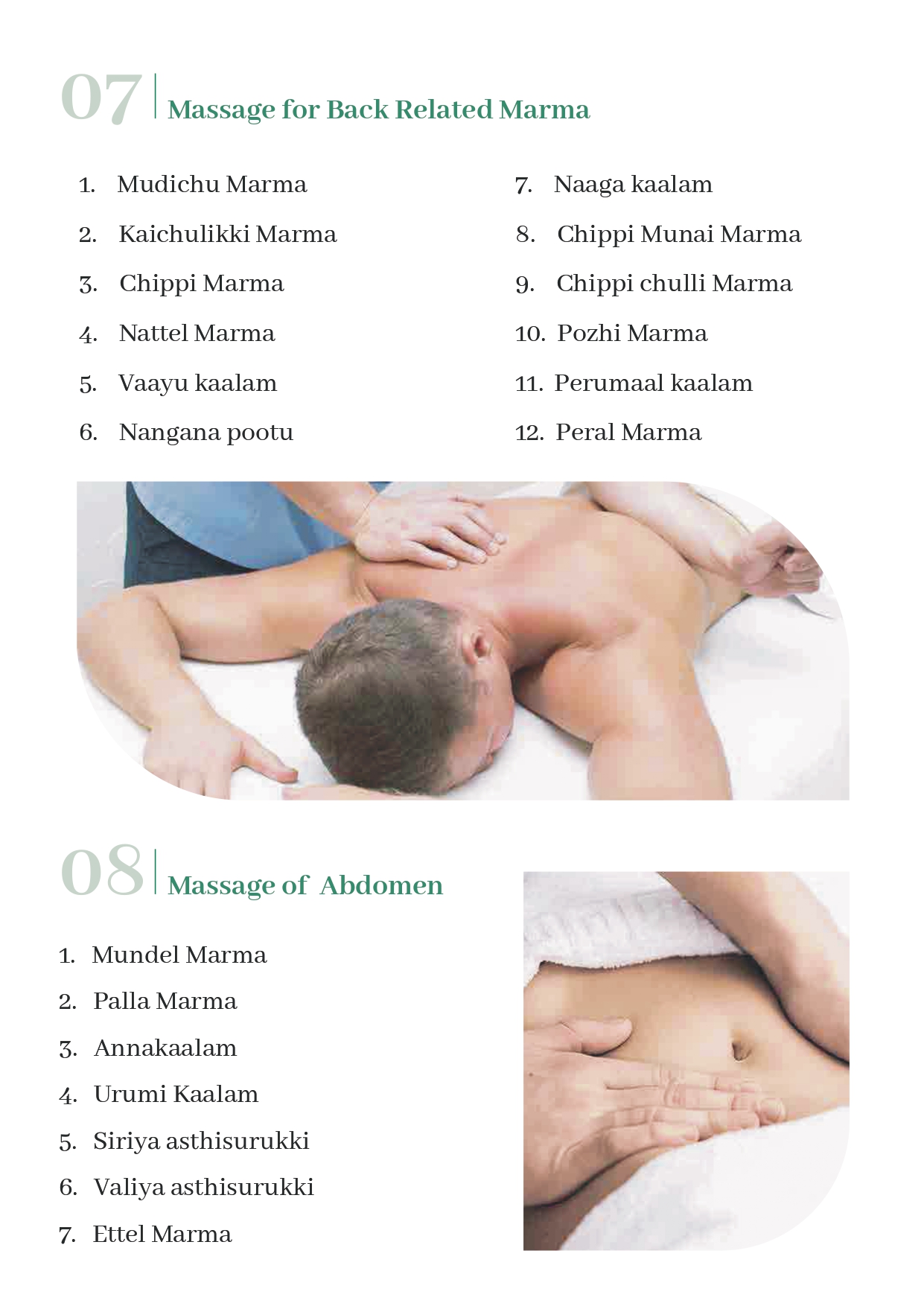
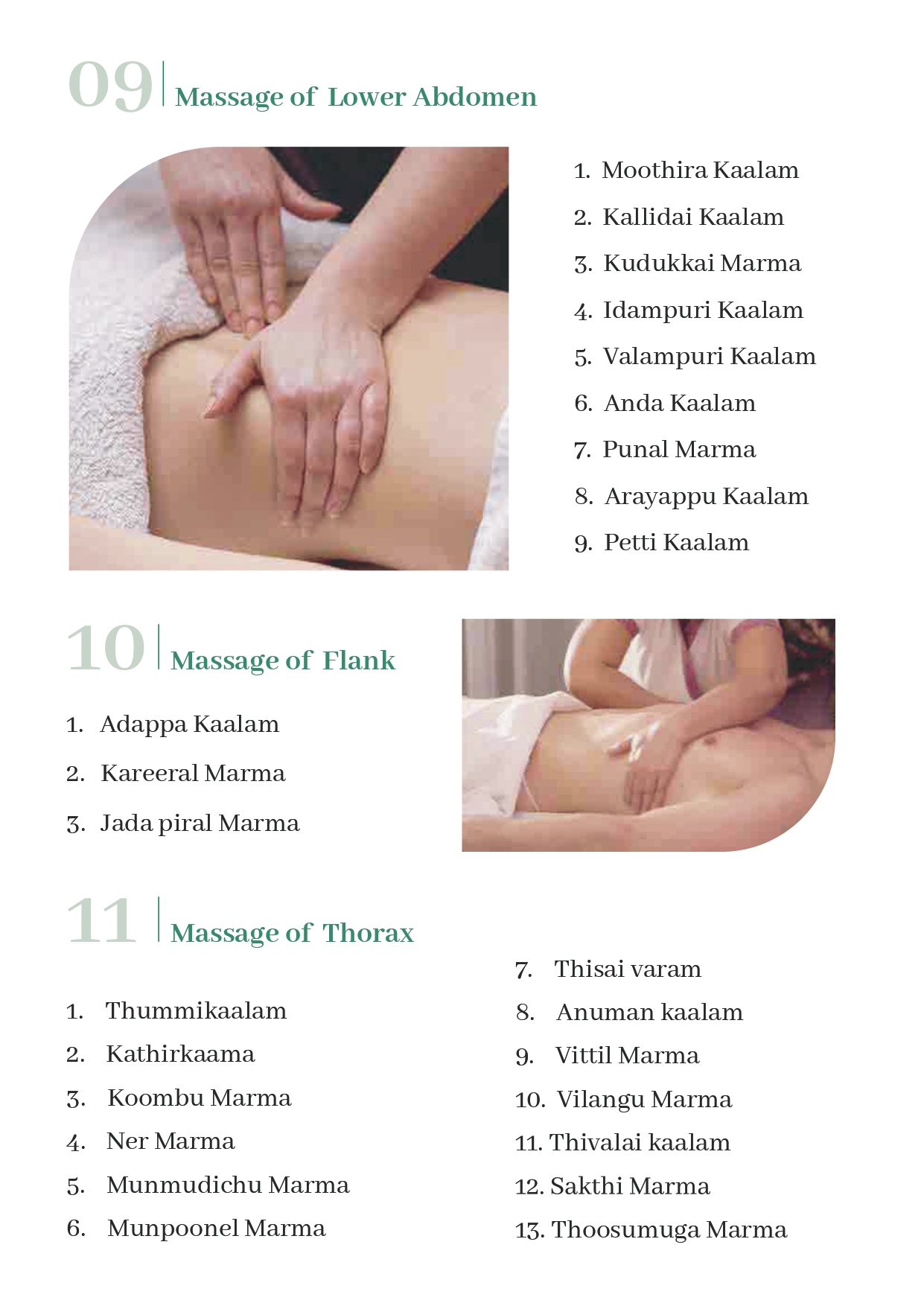
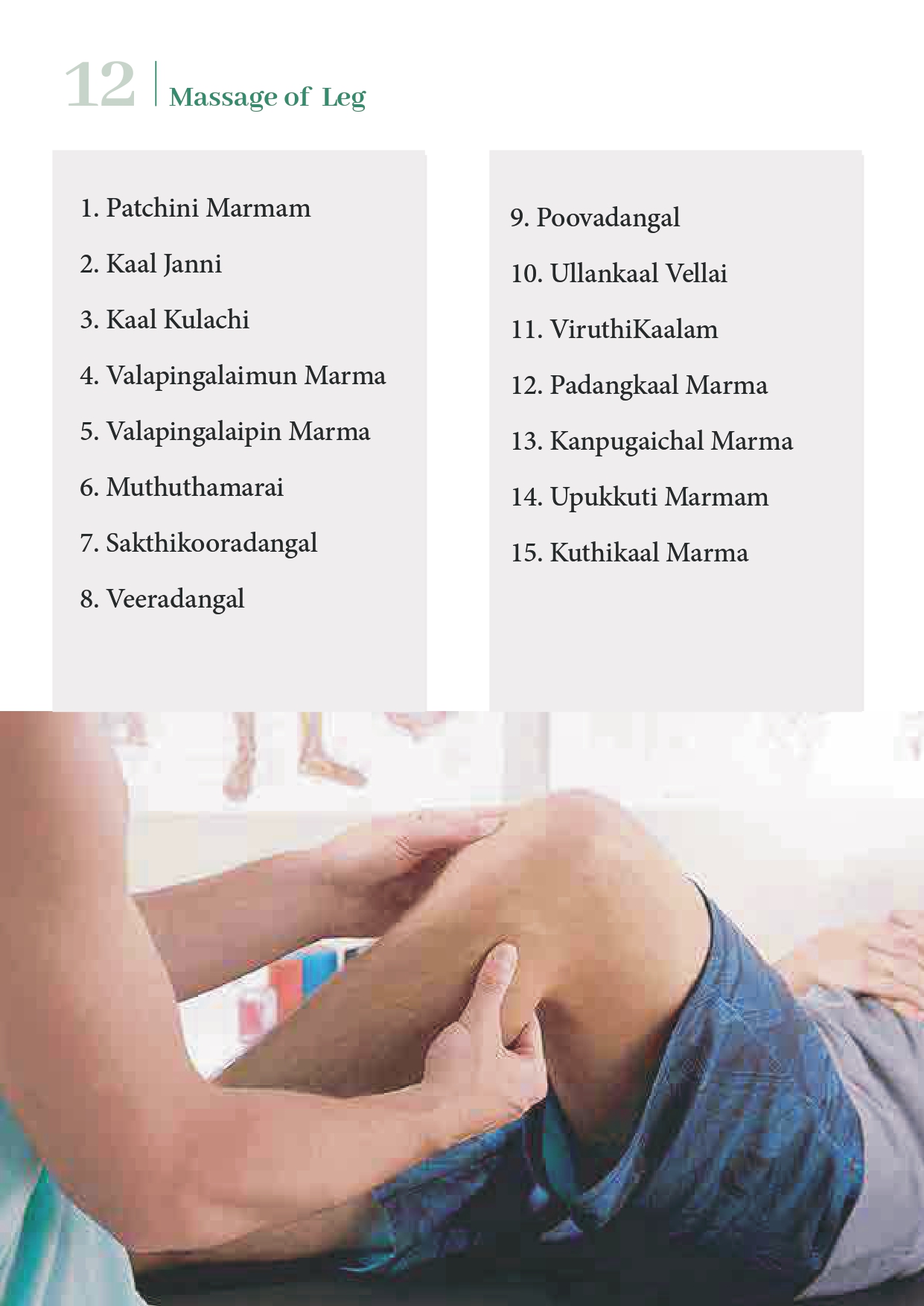

- Tones skin, muscles and nerves
- Disseminates vaayu and eliminates if excess
- Improves nutrition of muscles and joint flexibility
- Relaxes and increases sleep.
- Rejuvenates and increases body power.
- Removes body pain other musculoskeletal impairments.
- Improves circulation and muscle strength.
- Release muscle tension and anxiety.
- In a Neuro muscular disorder disease Progression and prevent disability by rejuvenating the depleted vaayus through Marma massage. Prevention of injuries and illness related with sports & other activi ties
- Helps to early treatment of sports related injuries & illness.
- Improvement of physical fitness & performance of sportspersons.
- To regain physical fitness of a sportsperson and send him back to the field as early as possible.
- Enhancement of Endurance.
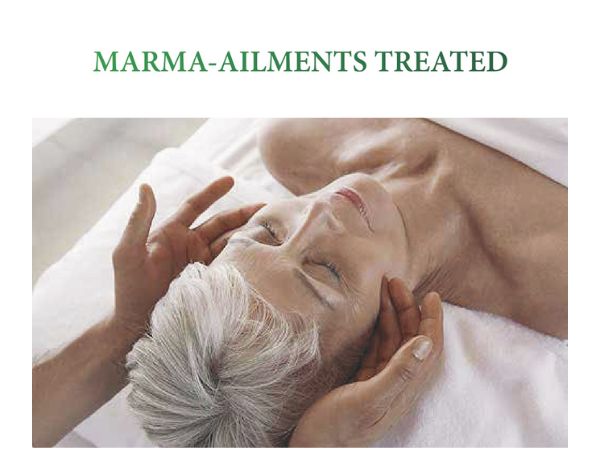
- Nervousness
- Anxiety
- Physical Rehabilitation
- Paralysis and Injuries
- Tingling in fingers or toes
- Stress, Lack of energy
- General weakness
- Muscular aches and Joint pains
- Backache Management
- Depression
- Anti Aging and Skin Care
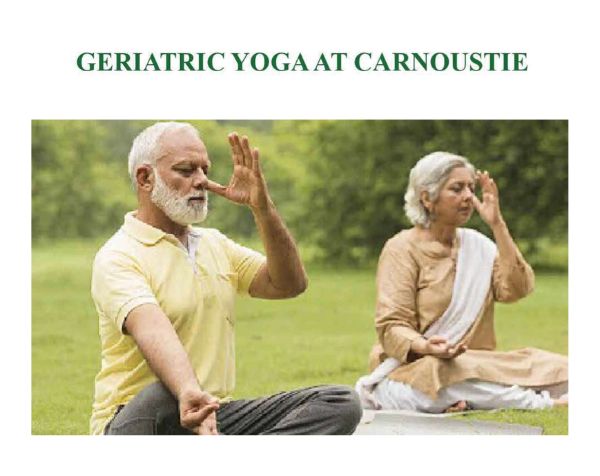
(For the elderly)
Geriatric care is one of the most important contributions of Yoga. Jogging, cycling, swimming and other types of exercise may not be possible after a certain age. Moreover, mental health is totally ignored in all kinds of physi- cal exercise where as mental well-being is one of the main concerns of Yoga.
There are many simple and easy practices in Yoga to overcome senility and to boost immunity. For instance, the exercises for the eyes, ears, neck, shoulders, elbows, wrist, knuckles, spine, hips, knees, ankles and toes from the pawamuktasana group are within the reach of anybody, regardless of age or the present physical condition.
As for the mental part, there are powerful relaxation techniques like Yoga Nidra to bring about total restful state of body, mind and emotions. Medita- tional practices like Antar mauna and Ajapa japa are very regenerative mental exercises making the mind peaceful and positive. Bandhas and mudras can also be performed by the elderly for healing and energizing.
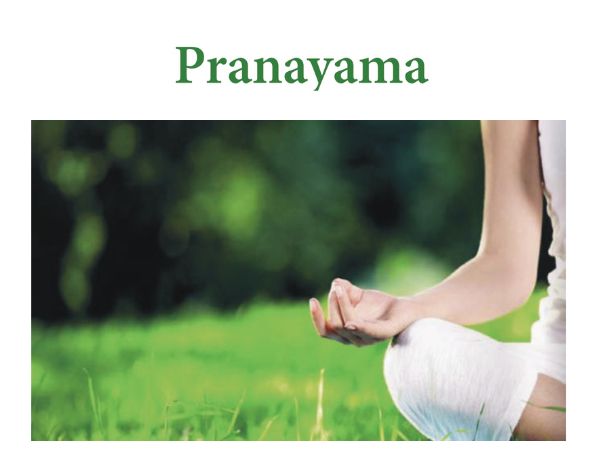
The Time Honored Art Of Breathing
Developed over 5,000 years ago, pranayama (Sanskrit for ' vital energy' and 'extend) is an integral aspect of yogic practice. Pranayama are a series of specific yogic breathing techniques and exercises which help us detoxify, burn fat and increase metabolism. The breathing regimen clears out the stale, residual air in the lungs and saturates the cells with oxygen and prana/life force energy. Exhalation releases large amounts of carbon dioxide and toxins, thereby purifying the body. With the basic act of bringing in more oxygen, vitamins and minerals are more easily absorbed, white blood cells multiply and the lymphatic system is enhanced. Pranayama removes toxins from the blood stream, which revitalizes the organs and clarifies the intellect, calms emotions, oxygenates the blood, builds internal body heat and strengthens the nervous system.
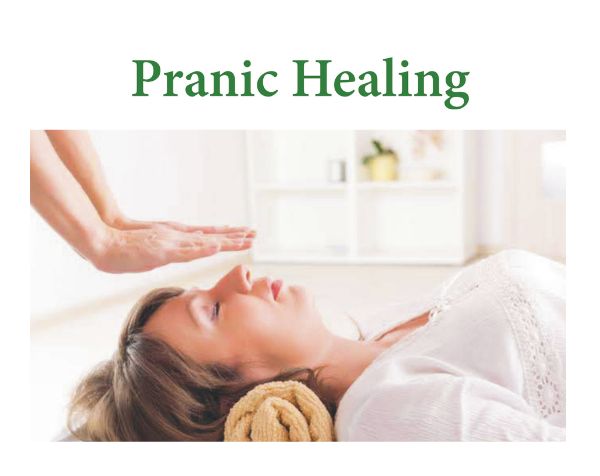
The 'No Touch' Energy Healing
Pranic healing is a simple yet powerful and effective system of 'no-touch' energy healing. Pranic healing at Carnoustie focuses on cleansing and energizing Cleansing means removal of the diseased energy from the health aura and energizing means adding 'prana or life energy to the affected area. It is based on the fundamental principles that the body is a self-repairing living entity that possesses the ability to heal itself and that the healing process is accelerated by increasing this life force that is readily available from the sun, air and ground within the recipient's body to address physical and emotional imbalances. Our experts focus on cleansing the Aura to achieve inner stillness and calm in those who are suffering from acute mental stress and depression.
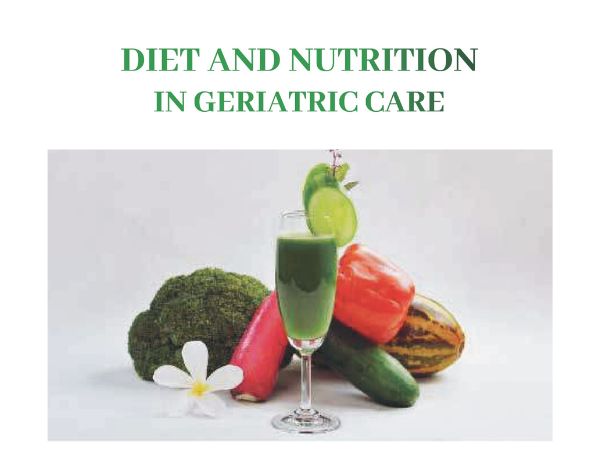
With increasing age, people become more prone to malnutrition for many reasons including Anorexia, Dementia, Depression, Stroke, Par- kinson disease and other neurological disorders, delayed gastric empty- ing. The diet should be regulated, taking into account the habitat, season, age, and according to one's digestive capacity.
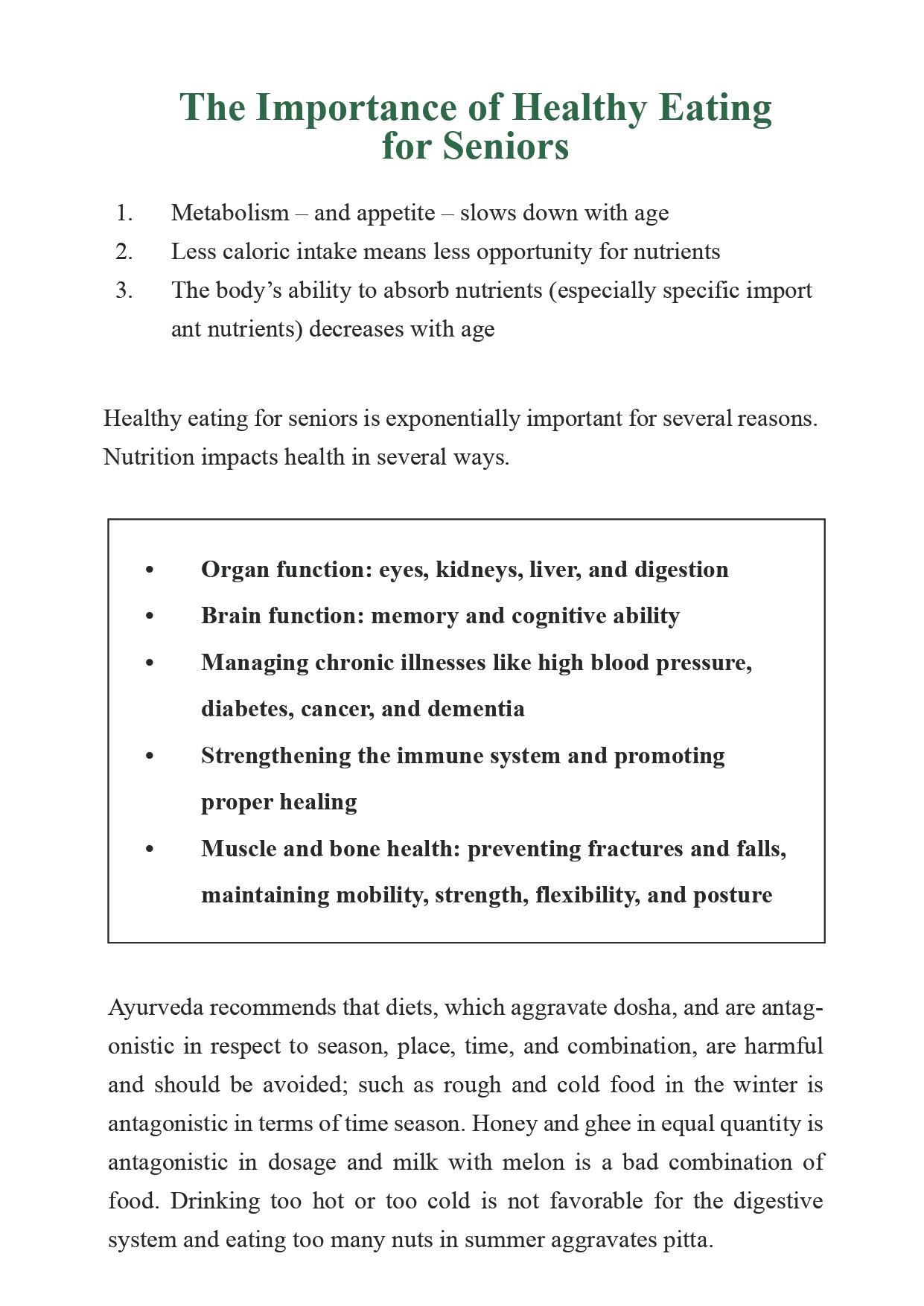
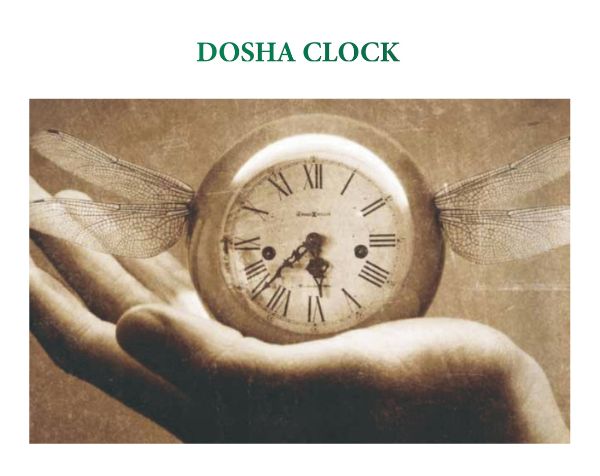
As per Ayurveda, the three Doshas- Vata, Pitta and Kapha have different energies at different times of the day. Accordingly, Ayurveda divides the 24 hours of the day into phases wherein one particular Dosha is dominant as follows:
- 6am to 10 am - kaphatime
- 10am to 2 pm -pitta time
- 2pm to 6pm - vata time
- 6pm to 10pm - kaphatime
- 10 pm to 2am - pittatime
- 2am to 6am - vata time
By understanding our dosha type, we can work our own body clock around these times to derive maximum benefit and to be most dynamic. Knowing and understanding the dominant dosha can really help in improving everything about oneself-right from digestion to productivity of the body and mind. For example, people who have a particular aggravated doshashould be especially careful during the time when that dosha is prevalent, because they might find it too much to handle. While one dosha type might feel at peak energy at that time, another dosha type might be the laziest and slowest during the same time. While those who have an aggravated or disturbed dosha might find it difficult during the phase when their aggravated dosha is at its peak.
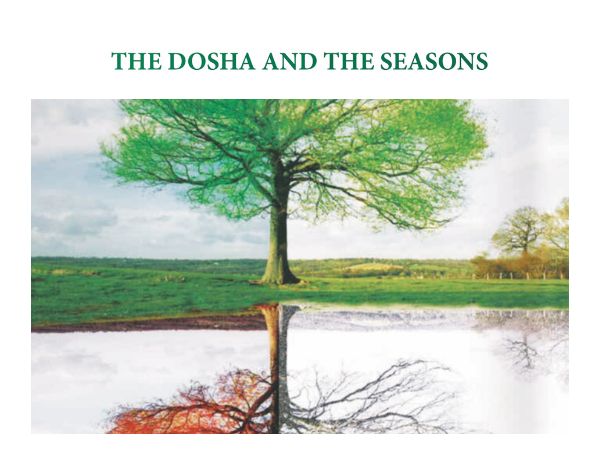
Ayurveda believes that external conditions directly impact the internal functioning of the body mechanism and that the doshas also get impacted by the seasons and the prevailing weather conditions. In seasons when the jala' or water increases in the atmosphere in the form of rain or snow, the kapha dosha dominates and can get imbalanced leading to watery secretions. That is why if we don't take precautions to keep the kapha balanced, we develop chest congestion, cold, watery eyes, sinusitis etc.
In the summer, the pitta dosha dominates because of the increase in temperature in the external environment. If Pitta is not kept under control, it can lead to excessive heat in the body resulting in ailments like high blood pressure, heated emotions, anger, irritability
etc.
Vata dominates in the autumn and spring. Since vata causes dehydration, if it is not controlled during this season, its imbalance can lead to excessive dryness and ailments related to mobility in the body. Its imbalance causes constipation, dry skin, anxiety, insomnia, stiff and aching joints and muscles, gas and bloating.
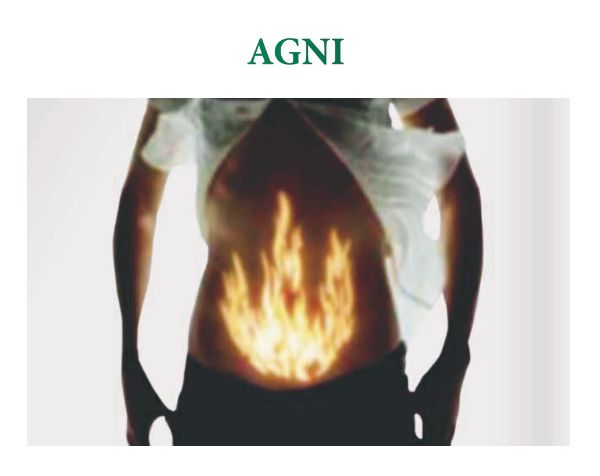
The digestive fire - the key to good health
Ayurveda emphasizes that all diseases originate first in the mind which on a physical level manifest as a breakdown in metabolic function governed by the digestive system. It is cyclic. Thus, if the digestive system is impaired, it effects the metabolic functions which in turn impact the general health of the human body and mind. It is the Agni or fire element that propels this digestive system and helps in breaking down our food intake into energy and nutrients which can be easily assimilated by the body. Agni is also needed for the assimilation and elimination process. Agni gives the body heat and keeps it alive at a certain temperature. This natural fire controls all transformative processes, including mental, physical and spiritual and plays a critical role in the maintenance of overall health. It impacts and affects everything from our digestive and excretory functions, to our mental capacity, emotional health and enthusiasm for life. A perfect example is to study how we behave when we suffer from a stomach disorder. In a situation like that, everything seems listless and one feels emotionally and physically exhausted. It is thus, important to appreciate this life force and protect and care for it.
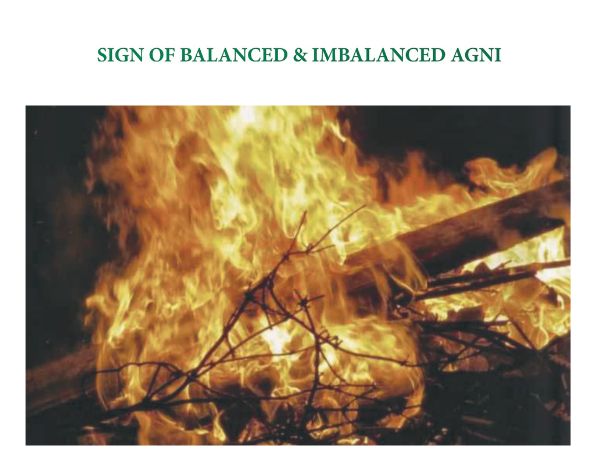
- Clean tongue
- Proper appreciation of taste.
- Good digestion, balanced metabolism
- Proper (and regular) elimination
- Good immunity
- Sound sleep
- High energy and strong vitality
- Calm mind and clarity of thought
- Sharp intellect
- Normal appetite (Note: healthy hunger implies a pleasant anticipation of food and not an urgent need to eat)
- Stable health, steady weight and normal blood pressure
- Cheerful, optimistic and enthusiastic demeanor.
